




and Sparkling Sailing Performance.

www.elan-yachts.com | sail@elan.si
Akrapovič Lifestyle
Spring 2024
Akrapovič d.d.
Malo Hudo 8a
SI-1295 Ivančna Gorica
Slovenia -
www.akrapovic.com
Editor in Chief: Miran Ališič
Publisher: Korpmedia GmbH
Seestrasse 144, CH-8802 Kilchberg, Switzerland
Office in Slovenia: Korpmedia d.o.o. Tomšičeva 1, 1000 Ljubljana, Slovenia www.korpmedia.siRegistration No.: 2272237000
VAT No.: SI14601737
Client Coordinator: Primož Jurman
Photo Editor: Bor Dobrin
Art Directors: Slavojka Akrapovič, Neja Engelsberger, Saša Kerkoš
Cover Design: Zdenko Bračevac
Design: Zdenko Bračevac, Andrej Perčič, Bojan Perko, Jan Mohorič, Akrapovič Kreativa d.o.o.
Content Editor: Jasna Milinković
-
Contributors: Alenka Birk, Bor Dobrin, Matevž, Hribar, Primož Jurman, Gaber Keržišnik, Volker Hirth, Toby Moody, Mat Oxley, Imre Paulovits, Miran Ališič, Mitja Reven
Contributing Photographers: Akrapovič, Blankframes, BMW, Bor Dobrin, Ducati, Graeme Brown, Hoch Zwei, Hyundai Motorsport, Primož Korošec, Polarity Photo, Ray Archer, Triumph Motorcycles, X-raid, Yamaha Racing
Translation: Matjaž Horvat, Werner Schneider
Proofreading: Tim Walpole
-
Ad space marketing: Korpmedia GmbH
Seestrasse 144, CH-8802 Kilchberg, Switzerland www.korpmedia.ch
On the cover: Tail Pipe Set (Chopped Carbon) for the BMW M2 Coupé (G87)
Photo Akrapovič
Printing: LUart, Lepovče 42, 1310 Ribnica, Slovenia
// Si
NOTE All the longer articles in the Akrapovič magazine include a text that will be marked with the // Si sign and placed in a special frame. The Akrapovič company is based in Slovenia and this is why we decided to keep this part of the text in Slovenian as well.



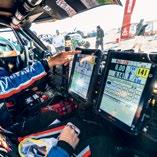
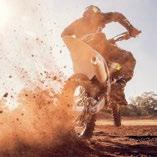
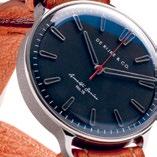




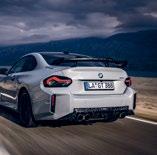



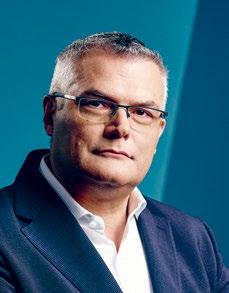
When I was asked to write the editorial for the latest issue of the Akrapovič Lifestyle Magazine, I felt a surge of excitement that reminded me of my childhood days. During the hot Italian summers, my father, a huge motorsport enthusiast, used to take me to watch the racing car tests at the Monza racetrack. I still remember our journey together to the immense centuries-old ‘Temple of Speed’ as if it happened yesterday. My amazement and excitement were overwhelming as I was flooded by the sound and symphony of racing cars and motorcycles.
During that time, my father built a Formula Monza 875 single seater in our garage to participate in the ‘Cadetti’ championship which took place at night on the floodlit Monza junior race track layout. That championship would turn out to play a pivotal role in the history of Italian motor racing in the 70s and 80s. The single seaters almost looked like toys, with the engine of the Fiat 500 Giardiniera. I remember, to my mother's joy, that Papa created the ultralight fibreglass bodywork from a plaster mould made in the bathtub. Those were heroic years and marked the beginnings for numerous young drivers, mechanics, technicians, organisers and enthusiasts.
I believe that was the moment when I subconsciously decided I wanted that sound and that world to form an essential part of my life. The world I intensely live in within Akrapovič today presents us with great challenges – challenges we accept and which require us to compete in increasingly complex and global scenarios. Doing so, we must be able to provide the best solutions for our partners.
In the past, the motorbike and the car were the experience, but experience today is a wider concept that completes them. Our goal is to create emotions that enable our clients to be the true ambassadors of a way of being and to enjoy the performance as a holistic experience, reminiscent of the symphonic concerts at the Teatro alla Scala in Milan, where the historic theatre and the sumptuous stage unite with the orchestra and its musical instruments which are expertly handled by talented musicians. It's a unique and engaging experience for the audience.
I like to think that our daily activities at Akrapovič are skilfully directed by our great orchestra conductor, guiding us to deliver performance with innovation, style, beauty, design and a lot of hard work. So, make yourself comfortable and let your hands open the curtains before being engulfed by issue 36 of the ALM.
Roberto Pellegrini Sales & Marketing Director at Akrapovič d.d.
The unique atmosphere of Garage Italia Milano was the backdrop for Akrapovič’s partners event, opened by a powerful musical performance with spotlights focusing onto race bikes equipped with Akrapovič exhaust systems. November’s event also featured two surprise guests: the 23-time winner of the Isle of Man TT John McGuinness and motorcycle racing legend Giacomo Agostini. As you can probably imagine, the ev ening was too short for all the tales the two racing legends had to tell.
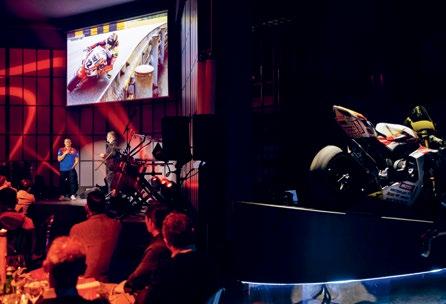

Automobili Lamborghini and Akrapovič have expanded their business relationship into the racing world with the Slovenian company becoming Lamborghini Squadra Corse Technical Partner. The Lamborghini SC63, racing in the FIA World Endurance Championship and the IMSA WeatherTech SportsCar Championship series, will thus be equipped with Akrapovič exhaust systems in 2024 and beyond. The SC63 is powered by a 3.8-litre twin turbo V8, which, in tandem with a hybrid system, produces 500 kW (680 hp), delivered through its RWD. “We have entrusted Akrapovič with the development and production of the SC63 exhaust system due to its globally recognised expertise in the motorsport field, thus expanding our partnership from the road vehicle sector to the motorsport division,” said Rouven Mohr, Chief Technical Officer at Automobili Lamborghini. Akrapovič CEO Davorin Dobočnik affirmed the successful business relationship with Automobili Lamborghini by saying, “We are taking the next logical step of working alongside Lamborghini Squadra Corse as a technical partner in the racing environment.”

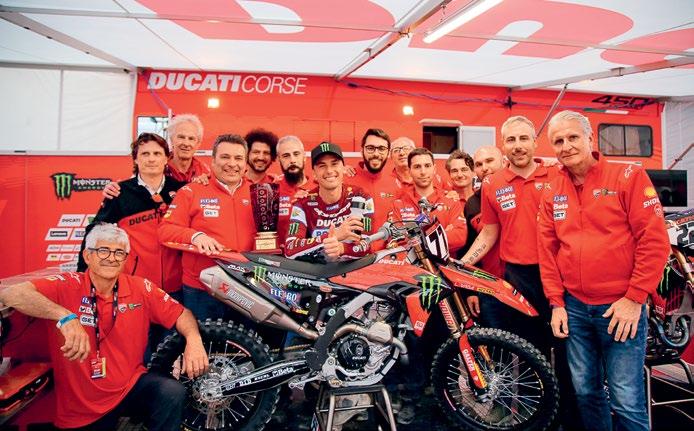
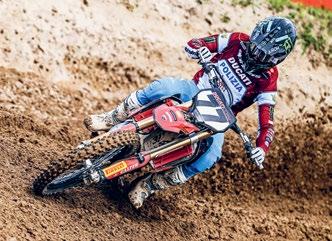
“We are very pleased to have extended Ducati Corse’s longlasting and successful relationship with Akrapovič also to our exciting new off-road program,” was how Paolo Ciabatti, Ducati Corse Off-Road General Manager, welcomed the expansion of cooperation with Akrapovič to off-road racing, where the Slovenian company will be supplying exhaust systems to the Ducati Corse Off-Road team. The new off-road division of Ducati Corse will oversee the management and organization of the Bologna-based manufacturer’s sporting programme, which will see participation in the FIM MXGP World Championship and the AMA Supercross Championship in the next few years. The Ducati Desmo450 MX ridden by Alessandro Lupino was victorious at its debut in the Motocross Pro-Prestige MX1 Italian Championship, and finished second overall in the first round of the 2024 season.
Akrapovič secured top honours for an incredible 11th successive year in the respected Motorsport aktuell’s Racer of the Year survey. The 2023 edition saw Akrapovič take top spot in ‘Most popular brands in motorcycle exhaust system category’ and ‘Most popular brands in car sports exhaust systems category’ with 85.3 % and 64.3 % of the vote, respectively.


Warhorse HSBK Racing Ducati’s Josh Herrin rode into the history books at the Daytona International Speedway, by taking the third victory at the famous Daytona 200. The dominant performance of the rider on the Ducati
lightweight titanium Akrapovič exhaust system, saw Josh beating his nearest competitor by more than 45

Peter Hickman of FHO Racing
BMW Motorrad Team delivered a masterclass performance during November’s 12-lap Macau Grand Prix race on the Akrapovič equipped BMW M 1000 RR, securing his fourth victory on the spectacular Guia Circuit street course. “It’s just fantastic to be first in every single session and winning the race, so I couldn’t really ask for more than that – I’m super happy,” is how Peter commented on winning the 55th edition of the Macau Motorcycle Grand Prix.
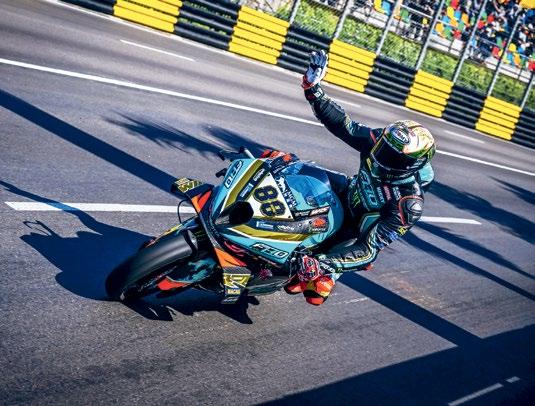 Panigale V2, equipped with a
seconds.
Panigale V2, equipped with a
seconds.

It has been exactly 25 years since BMW last won at the 24 Hours of Le Mans with a prototype – the famous BMW V12 LMR. For the 2024 season, BMW M Motorsport has returned to the grand stage of the FIA World Endurance Championship, competing with the BMW M Team WRT with Raffaele Marciello, Dries Vanthoor, Akrapovič Brand Ambassador Marco Wittmann, Robin Frijns, René Rast and Sheldon van der Linde behind the wheel. As an official BMW M Motorsport partner, Akrapovič will be equipping both BMW M Hybrid V8 cars in their quest for FIA WEC glory, including an art car that will make its debut at Le Mans. The 20th Art Car in BMW’s history, designed by artist Julie Mehretu, will have the starting number 20.
Readers of the renowned Motorrad magazine were once again asked to cast their vote for the best brand in various categories, choosing Akrapovič for the 19th time in a row as the best brand for motorcycle exhaust systems. Akrapovič won 72.9 % of the vote, with 47,707 readers taking part.
20 24
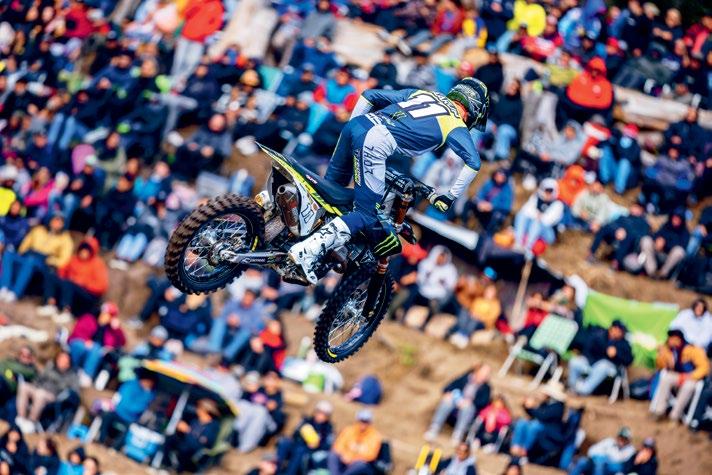
The partnership between Triumph and Akrapovič was strengthened even further in 2024, with the Slovenian exhaust manufacturer providing its exhaust systems to Triumph Racing’s global off-road racing programme. “Developing a competitive racing programme relies not just on the dedication of our engineers, teams, and racers, but also on building partnerships with the best companies in our industry. When it comes to exhausts, Akrapovič was the obvious choice. Working with Akrapovič as a development partner for our off-road racing programme ensures that we can extract the best performance from our race engines,” said Ian Kimber, Head of Off-Road Programmes at Triumph Motorcycles, who’s in charge of Triumph Racing’s FIM MX2 Motocross World Championship and AMA SuperMotocross campaign with the completely new Triumph TF 250-X bike.
Akrapovič was delighted with the news from the acclaimed sport auto magazine, informing the Slovenian company that it was chosen as the best brand for car exhausts. The 2023 edition of the Best Brand award saw the Slovenian brand taking its 14 th win while being favoured by 71.9 % of the readers.
Two years after making history and setting an altitude world record, Pol Tarrés returned to Chile and set the bar even higher. Pol reached an incredible height of 6,677 metres on a Yamaha Ténéré World Raid GYTR with an Akrapovič exhaust. “Above 6,000 metres everything seems to go super slow, the physical exhaustion is indescribable and there is no room for mistakes. Even walking is a challenge, let alone riding a Ténéré at this altitude,” the thrilled Pol Tarrés said.

Akrapovič launched a partnership with Hyundai Motorsport by providing its exhaust systems to the Hyundai i20 N Rally1 Hybrid rally cars. The collaboration could hardly have gotten off to a better start, as Hyundai Shell Mobis World Rally Team won the first rounds of the 2024 FIA World Rally Championship. Thierry Neuville and Martijn Wydaeghe won at the famous Rallye Monte-Carlo while Esapekka Lappi and Janne Ferm were unbeatable in Sweden. “Our collaboration is pushing the boundaries in critical areas, such as exhaust systems and thermal management. As a result, we have brought innovative solutions into the Hyundai i20 N Rally1 Hybrid for the 2024 season, boosting its reliability and performance. Akrapovič’s race-proven materials, insulation, and technical know-how made them the natural choice of partner as we continue our drive to improve our WRC challenger,” François-Xavier Demaison, Hyundai Motorsport Technical Director, commented on the partnership.



If you see the letter M on a sporty Bavarian SUV, sedan or coupe, you probably think power and performance and so does Akrapovič. Soon after BMW unveiled its all new M2 Coupé, the engineering department at Akrapovič went to work. The main component was – of course – the exhaust, but the team went beyond that. To improve performance, you also need downforce. To increase downforce, you need wings and that’s what the company produced. It developed a new lightweight exhaust, a special wing and a diffuser for the BMW M2 Coupé, to change its power, performance and sound. Let‘s go and test them out.
A special car requires a special environment. What will it be? A racing circuit like Croatia’s Grobnik or Austria’s Spielberg? No, the all-new BMW M2 Coupé is a road car. The Munichbased manufacturer may not produce the M Competition model, meaning that the new M2 Coupé is now much closer to the previous Competition version. But you can make your own special edition - by using the Akrapovič exhaust, diffuser and rear wing kit. Now that we have that extra package, we only need mediumto high-speed smooth corners, empty roads, cool scenery, solid tarmac and a dry sunny climate. Hmm… Hang on, there is a road where many car manufacturers film ads and test their cars. It connects the ferry port of Žigljen with the resort town of Novalja on the Croatian island of Pag. It’s off season now and the road ticks all the other boxes too. With the engine roaring to life and the exhaust singing, we set off for round one – warming up our M2 Coupé.
It talks the talk…
But before we delve into our test drive experience, let’s take a look at our Akrapovič aftermarket kit. First the exhaust. Akrapovič’s Slip-On Line (Titanium) is fully crafted from high grade titanium and comes in two tailpipe designs: the octagonal shape as fi rst seen on the BMW M3/M4, or the more traditional and classic oval design. Both have outer sleeves hand crafted from carbon fi bre over the titanium inner and it’s worth mentioning that the valve housings and collectors are cast in the company’s in-house titanium foundry. But there’s more good news. Not only is Akrapovič’s exhaust 7.3 kg lighter than its stock BMW M2 Coupé counterpart, testing on the company dyno showed that engine power increased by 3.9 kW (5.3 hp) at 2,800 rpm while torque rose by 13.5 Nm, also at 2,800 rpm, when tested against a BMW M2 Coupé with a standard stock exhaust. For an extra personal feel, our M2 Coupé was also fi tted
Not only is Akrapovič’s exhaust 7.3 kg lighter than its stock BMW M2 Coupé counterpart, testing on the company dyno showed that engine power increased by 3.9 kW (5.3 hp) at 2,800 rpm while torque rose by 13.5 Nm also at 2,800 rpm.

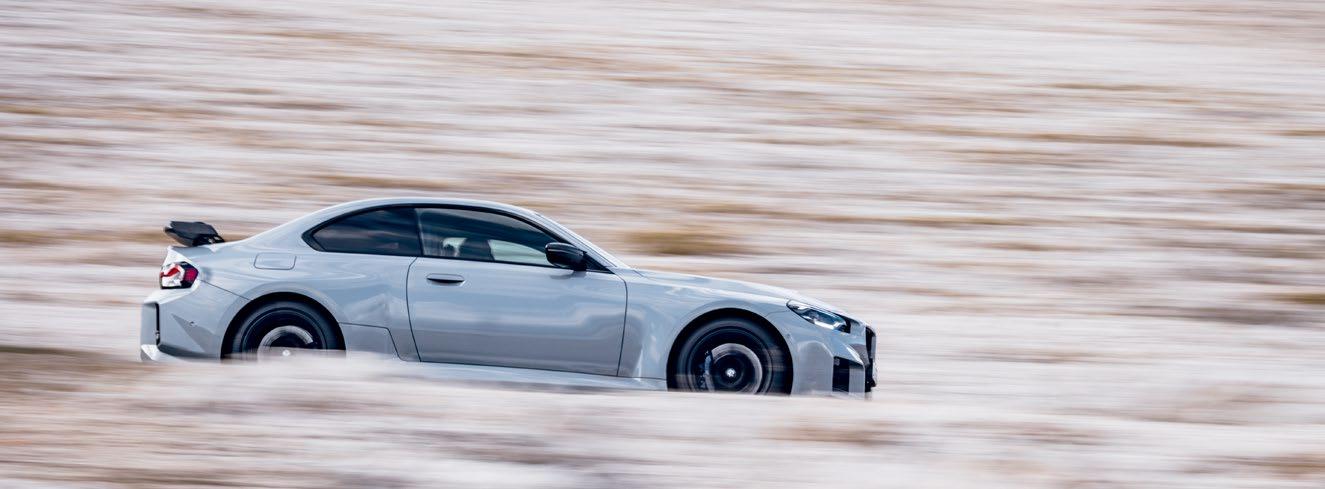
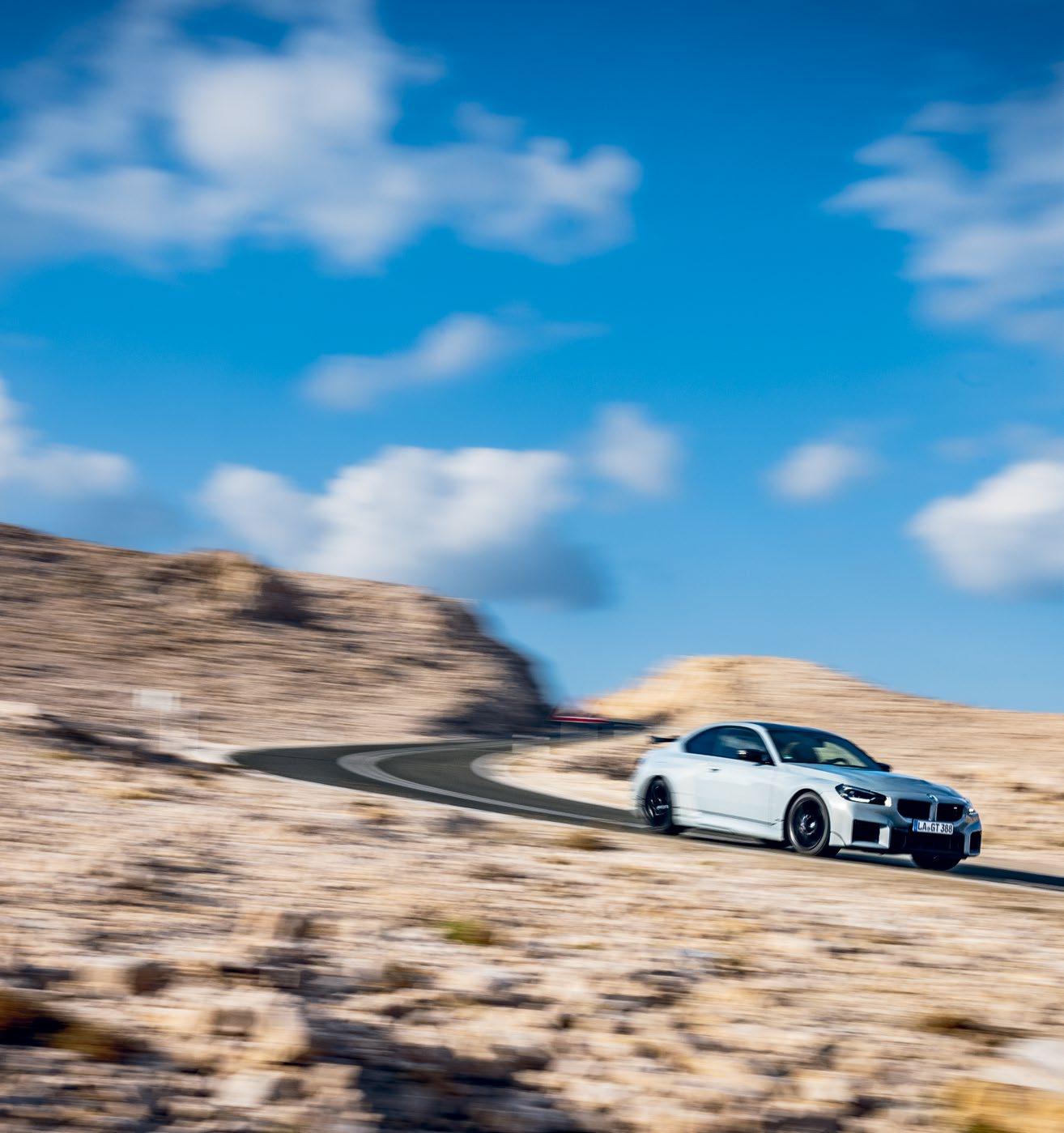




with a handcrafted carbon-fi bre rear diffuser. You can choose between high gloss or matte black and a recently unveiled special new option – Chopped Carbon. And that’s exactly what we chose for our test drive in the M2 Coupé. Technically it’s similar to the other carbon options, but it’s visually completely different and is likewise produced in-house, at the Akrapovič factory in Črnomelj, Slovenia. Last but not least – the wing. Being made from titanium and carbon improves its resistance to galvanic corrosion, increases its durability and makes it as light as possible. The bolts used to attach the wing and the brackets are made from high grade titanium – like the exhaust. The wing was developed to achieve an extremely competitive ratio between downforce and drag. Computational fluid dynamics has played a major part in its development to ensure that it functions as optimally as possible. The goal was to increase the car’s stability at high speeds by applying additional downforce to the rear axle. Fully adjustable to three levels, the wing needs to be manually set to the preferred angle before getting in the car. And, of course, rear wing and diffuser come with ABE type approval. The Akrapovič Slip-On Line (Titanium) exhaust meets ECE type-approval conditions for the BMW M2 Coupé (G87) with OPF filters.
… and it walks the walk
We adjusted the wing and got to testing the grip. Pag was almost empty, with cars only passing us by every hour or two as the ferry
connecting the island with the mainland arrived.
A lot of space for testing. Our photographer Bor found his spots and I pushed on the pedal. The engine’s roar filled the air surrounding the creamy coloured stones washed by the strong Bora wind blowing from the mainland. The M2 Coupé stayed neutral as I headed into a double corner, first an easy right with almost full throttle and then a tricky left. As I was getting closer to the apex, I had to carefully adjust my speed not to be surprised by too much understeer. I did two runs before Bor stopped me: “Couldn’t you go a little bit faster through that left hander? It looks like you are hardly moving!” he said. “Sorry,” I replied, “but I’m doing almost 90 km/h and it’s a very tricky corner...” Well, let’s see if I can improve a little, maybe push just a little bit more? I decided to test the wing, I came out of the smooth right hander even faster, steered the M2 Coupé into the left turn just a second earlier and then let it slip through the corner. I didn’t lose the rear, the car stayed neutral and I could feel it – the rear end grip that helped me go through the corner faster. “Fine, I’m done, you looked a little bit faster now,” commented Bor as I stopped to pick him up. While we were waiting for the ferry to take us back to the mainland, I was gathering my thoughts and realised – with one’s own kit you can drive safely and fast and it doesn’t even look like you’re trying.
Starting numbers on motorcycles have become a major trademark of riders in recent years. They get chosen in various ways: some riders use their year of birth, others their birthdate, others still get them from their racing idols or relatives. The starting number 1 shows respect for success, achievement and championship title. We followed its history, looked into whether all champions use it and uncovered a wealth of different stories.
It used to be inconceivable for a world champion not to use the number 1 on their bike after winning the overall title as it was seen as insulting to the honour being so bestowed. Some riders were even forced to put the number 1 on their bike, but customs, habits and traditions are changing. Who here doesn’t remember Valentino Rossi and his famous 46, which has become the Italian’s trademark. Rossi stuck to his number and Marc Márquez followed suit by keeping his 93, year in, year out. And how is the number 1 seen by today’s heroes of asphalt and muddy race tracks? Let’s check the asphalt first.
Francesco Bagnaia (Ducati Lenovo Team), the reigning FIM MotoGP World Champion, whose number used to be 63, proudly switched to the number 1 on his Ducati. “Why did I choose the number 1? I’m the world champion, aren’t I!? It didn’t take me long to decide which number to use after winning the overall title,” Bagnaia defends the tradition, which he is glad to follow. “Having the number 1 on a motorcycle is a great award and honour. Not everyone gets to use it. At the same time, it is also a recognition for my team and for Ducati,” says the Italian.
_ YART Yamaha replaces 7 with 1 The situation is similar yet somewhat different at the Austrian Yamalube YART Yamaha EWC Official Team. Three YART riders won the title of FIM World Endurance Champions last year: Italian Niccolò Canepa, Czech Karel Hanika and German Marvin Fritz. Starting numbers are a bit more complicated, or maybe easier, because the three use the same motorcycle and therefore have one common or team starting number, which was traditionally 7 for the YART team. “In the 2024 season, we will use the number 1, as it represents the fantastic achievement we attained last year. I admit that I was a little sceptical about the change at first because I’m a bit superstitious and wanted to keep the 7, but the other guys made me change my mind. It’s just a number anyway. Outside the championship, I race with the number 98,” explains Hanika. Fritz adds, “I’m used to the number 7, because it has always been my
“Why did I choose the number 1?
I’m the world champion, aren’t I!? It didn’t take me long to decide which number to use after winning the overall title,” Bagnaia defends the tradition, which he is glad to follow.
“Having the number 1 on a motorcycle is a great award and honour. Not everyone gets to use it. At the same time, it is also a recognition for my team and for Ducati.”
Francesco Bagnaia, reigning FIM MotoGP World Champion Francesco Bagnaia, Ducati Lenovo Team
Francesco Bagnaia, Ducati Lenovo Team
number. I was inspired by my idol James Stewart, a successful American supercross racer, who used it when I was still in motocross. We owe it to our supporters, the team, the fans and the sponsors to use the number 1,” with Canepa agreeing, “We did the right thing by changing to 1. We won it fair and square and we deserve it. When racing on my own, I’ve always used 59 or 88, but in endurance racing the number represents the whole team.”
Moving on to Álvaro Bautista (Aruba.it RacingDucati), the FIM Superbike World Champion for the 2023 season. How does he see this sleek and desirable number? “My favourite number is 19, it’s been with me since the start of my career. But I’ve never had the opportunity to put the number 1 on my bike. When I became world champion years ago, I moved to a higher class and so wasn’t able to use it. After winning the WorldSBK title I knew exactly what I wanted to do,” says Álvaro Bautista’s before adding, “It’s always difficult to change one’s permanent starting number. I think that one does not very often get a chance to race with the number 1.”
“I’m using 304 because that’s my birthday, 30 th of April, a cool thing which means a lot to me.”
Manuel Lettenbichler, 2023 FIM Hard Enduro World Champion
Jorge Prado ditches the 6 We are now leaving the road and moving over to riders who prefer somewhat softer surfaces. The best motocross rider in the world, Jorge Prado, showed exceptional consistency throughout the 2023 FIM MXGP World Championship season on his Red Bull GASGAS Factory Racing motorcycle and proudly removed the number 6 from his beloved 61 for this year’s campaign. “61 will always be in my heart, it’s my favourite number,” says the Spaniard, “but I knew that if I ever became world champion, I would put the number 1 on my bike.” That’s not the view taken by Andrea Adamo (Red Bull KTM Factory Racing), the Sicilian who won the MX2 class title last season. Asked whether his KTM 250 SX-F will bear the number 1, he adamantly says, “No! I’ll stick with the number 80, because I’m not a big fan of the number 1 for now.” The same goes for enduro rider Manuel Lettenbichler (Red Bull KTM Factory Racing), no longer just the son of the great racer Andreas Lettenbichler, but a world champion himself after a fantastic, many even say once-in-a-lifetime season. Manuel won all six quite different races of the hard enduro championship and will remain faithful to his number 304. “I’m using 304 because that’s my


 Jorge Prado, Red Bull
GASGAS Factory Racing
Álvaro Bautista, Aruba.it RacingDucati
Yamalube YART Yamaha EWC Official Team
Jorge Prado, Red Bull
GASGAS Factory Racing
Álvaro Bautista, Aruba.it RacingDucati
Yamalube YART Yamaha EWC Official Team




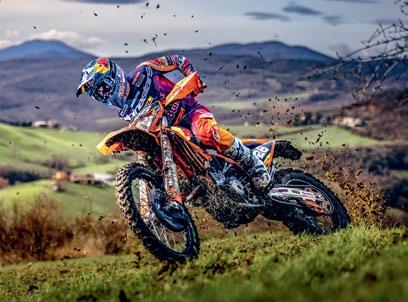

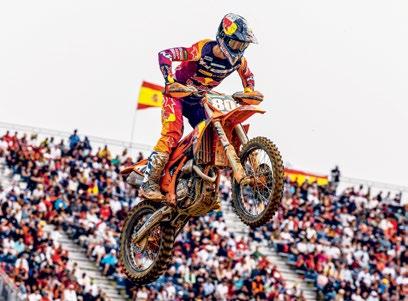
birthday, 30 th of April, a cool thing which means a lot to me. It’s also part of my branding and I don’t want to change it now. Maybe it also brings me luck. So the 304 will stay.” Many racers get attached to their starting numbers because they have used them ever since they started racing. Josep Garcia (Red Bull KTM Factory Racing), the FIM Enduro 1 World Champion will also not part with his 26. “I will keep the 26. That’s the number I’ve been racing with my whole life. This number is like my ID,” laughs the fast and combative rider, who seems to ride the enduro at the speed of a motocross race. He won the title despite breaking his collarbone and dislocating his elbow at the Swedish Grand Prix.
Number 77 on bike and skin Rally rider Luciano Benavides (Husqvarna Factory Racing) is even more enamoured with his particular number. The Argentinian has been using the number 77 since his first Dakar, with the exception of 2020 when he was given the number 16. He wore the number 1 this year as the reigning FIM Rally-Raid World Champion, but if you look closely, you will notice a small 77 in the corner next to the big 1. “77 is my personal mark. I also have it tattooed, so it means a lot to me. I was very proud to be the only Husqvarna rider with the number 1 at the Dakar. It gave me a lot of motivation and confidence.”
Who would have thought that opinions could differ by so much? The world has become more open and the tradition that the champion always has the number 1 and only the number 1 on their machine is no longer binding. Apparently, many believe that such respect can be shown in other ways as well. Probably true, because riders celebrate their successes and world championship titles each in their own way.
It used to be inconceivable for a world champion not to use the number 1 on their bike after winning the overall title, as it was seen as insulting to the honour being so bestowed.

Racing done during the day is more or less taken for granted. Drivers in four-wheel series (and it‘s a similar story for bike riders) generally start the race early in the afternoon in peak daylight, perhaps encountering difficulties in the guise of rain or fog, less often snow. All these are, of course, predictable, as weather forecasts have become very accurate. But what about races that last for six, eight, twelve, or even twenty-four hours? Drivers must first adjust to dusk, then complete darkness and dawn while getting progressively tired along the way. So how does racing in such conditions compare to daytime racing, how does race car preparation differ and what do the teams and drivers need to be aware of? We decided to find out.

 photography Hoch Zwei, BMW M Motorsport
photography Hoch Zwei, BMW M Motorsport
Imagine you are hurtling into the darkness at 250 or 300 km/h, chased by a cluster of ruthless rivals eager to overtake you.

Imagine having to embark on a long journey that requires driving in the dark. During the night’s embrace, visibility gets reduced severely, also causing your anticipations of and responsiveness to traffi c situations to change. Due to different driving conditions, you tend to become more focused, and your brain processes the sensations of speed and braking
faster, as visual information pouring into it mainly depends on your car’s lights. You also get tired sooner. If it’s very late (or early), your body calls for rest. It is therefore not unusual that some people avoid driving at night. Well, now imagine you are hurtling into the darkness at 250 or 300 km/h, chased by a pack of ruthless rivals eager to overtake you.
In and out of the darkness
Endurance racing is said to be the ultimate test of man and material, with both pushed to their limits. From that perspective, classic daytime races seem like sprints that are over quickly (in about two hours), while endurance races, apart from requiring durable material and prolonged team and driver focus, also bring with them


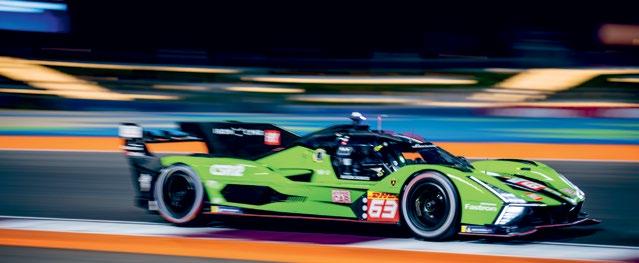
At night, a crew member‘s voice coming from the driver‘s headset is the only connection to the outside world.

changing conditions on and around the track. As the day fades to dusk and then to darkness, drivers become increasingly dependent on their feel for the race car: they can no longer see the exit from the turn as they could during daytime, or detect the optimal braking point, and so have to rely on their gut feeling. In doing so, they must often trick the brain, which, fully engaged in self-preservation survival instinct, screams enough is enough, the limit has been exceeded! But professional drivers need to go beyond that point and tune in to their feel for the car. During the day, it’s easy – at least in theory. If drivers aren’t forcing the car to stay on the racing line, then they know they’re not at the limit. The same applies at night, but the key point then is to check whether they’re still pushing the car to the utmost to reach the destination rather than simply driving towards it. The feeling of speed is not in the limelight here. As the drivers’ eyes adjust to the darkness, everything
becomes a bit slower in reality, even though still feeling fast, a situation not helped by the rivals’ lights fl ashing in the rearview mirrors. Also important in endurance (as well as other types of) racing is communication between teams and drivers. At night, a crew member’s voice coming from the driver’s headset is the only connection to the outside world. Drivers trust it, because it provides important information, and, psychologically, helps to maintain their concentration and motivation, therefore being invaluable during nighttime racing.
Key differences – vision and illumination
So how does a team prepare a car for night racing, and what must it pay attention to?
Valentino Conti, Head of Track Engineering and Operations at BMW M Motorsport which is racing in FIA WEC and IMSA WTSC with Akrapovič equipped BMW M Hybrid V8 cars
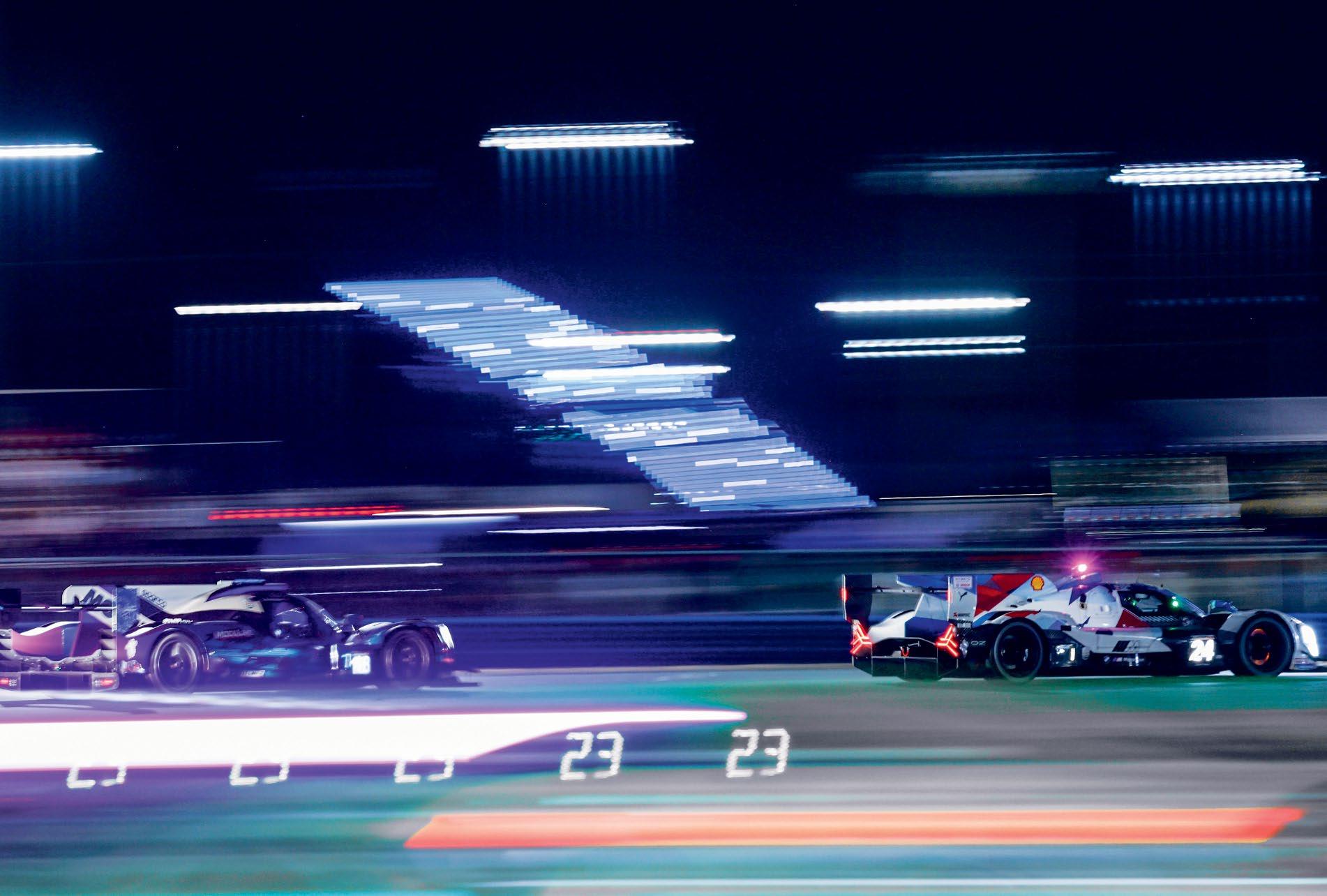
- Akrapovič is Offi cial partner of BMW M Motorsport - says, “It’s obviously much easier to fi nd the driver’s limits in daylight rather than at night, but we must also take into account the temperature difference between the two that results in changes to tyre handling and car balance. The teams need to prepare all of the car’s outside as well as cockpit lights. If not adjusted correctly, these might actually hinder the driver or cause issues when locating the correct buttons. Illumination in general is very important. Tyre type and tyre pressures are another important area which needs additional attention. Moreover, engine and system temperature need to be considered – race cars are usually tuned to last for a shorter time period, but for endurance racing you need to take in race duration and prepare appropriate backup measures to use if necessary.” Turning to the difference between early-morning and early-evening racing as regards track condition

“The fastest lap times usually come right after sunset – the light is still good, the temperature comparatively low (no heat from the sun) and drivers are fresh.”
Valentino Conti
and how the team approaches both, Valentino continues, “We prefer that the driver stays in the car as the day turns to night and vice versa. It’s not recommended to swap the driver in such changing conditions. Both dusk and dawn present a challenge for everyone as drivers and teams are more prone to crashing or making mistakes in general, due to the level of focus, body rhythm and diffuse lighting. In general, more accidents seem to happen at dawn than dusk.”
As we are talking about racing here, I continue by asking how fast can a racing car drive in the darkness. Leonardo Galante, Automobili Lamborghini Motorsport Technical PL & Development engineer - Akrapovič is

Lamborghini Squadra Corse Technical Partner, equipping Lamborghini SC63 with exhaust systems racing in FIA WEC and IMSA WTSC - says: “Excluding driving performances, the car is faster during the night because the temperatures are lower and engine and tyres usually performs better. The most important variable data is the delta of temperature of asphalt and air that can affect the performance of the engine and the degradation of the tyres, so the main factor to keep attention is the performance of the tyres on lower temperatures of the track.” Valentino Conti explains further that speed at night depends also on the race track in question. “Sometimes

at Le Mans, the fastest laps can be done at night, when the driver has settled into a good rhythm, the temperature is just right and traffi c sparse. However, the fastest lap times usually come right after sunset – the light is still good, the temperature comparatively low (no heat from the sun) and drivers are fresh. Air density is higher which aids naturally aspirated engines and increases downforce.” Valentino mentioned yet another factor before concluding with his thoughts about racing at night – competition. “It’s all about how close together the fi eld is. The last laps in Daytona were a full-on battle and everyone had to drive fl at out without any margin left.”
At the end of the day, it’s not all about day and night. It’s about special circumstances and moments in the race. We could easily say that even darkness could be an advantage.

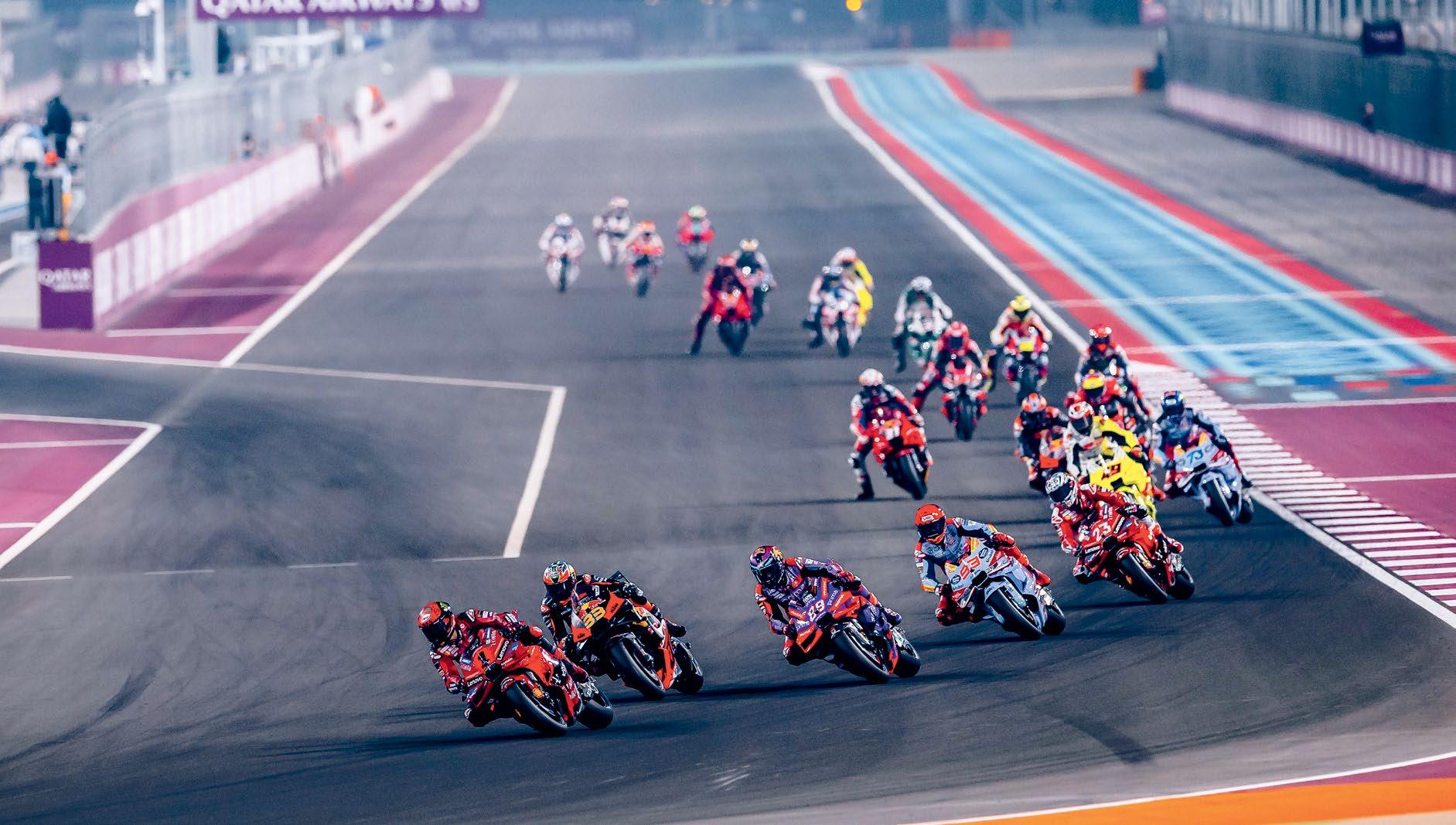
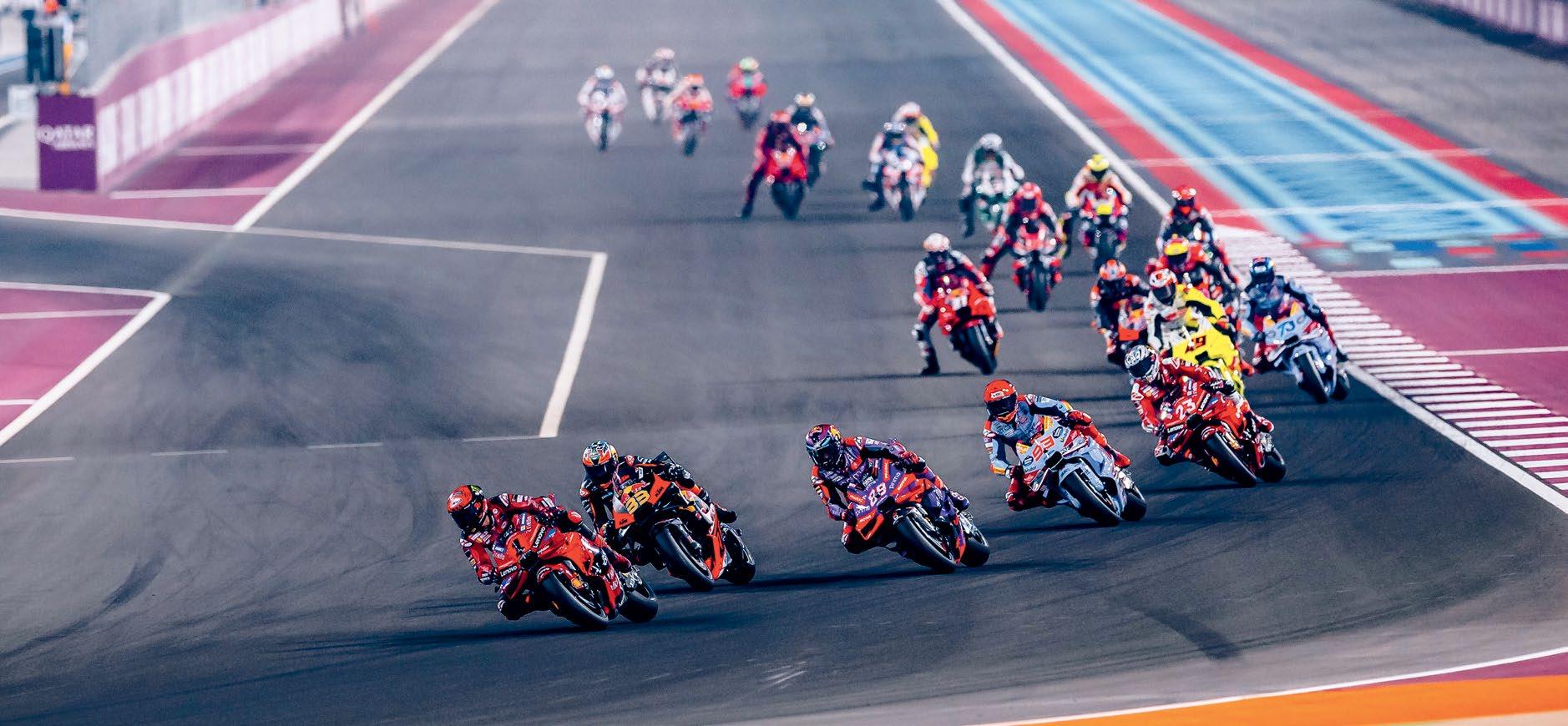
 by Imre Paulovits
by Imre Paulovits


There have been more rider changes in MotoGP and WorldSBK for the 2024 season than have been seen for a long time. What was the cause and what are the effects? Has everything become better for everyone?





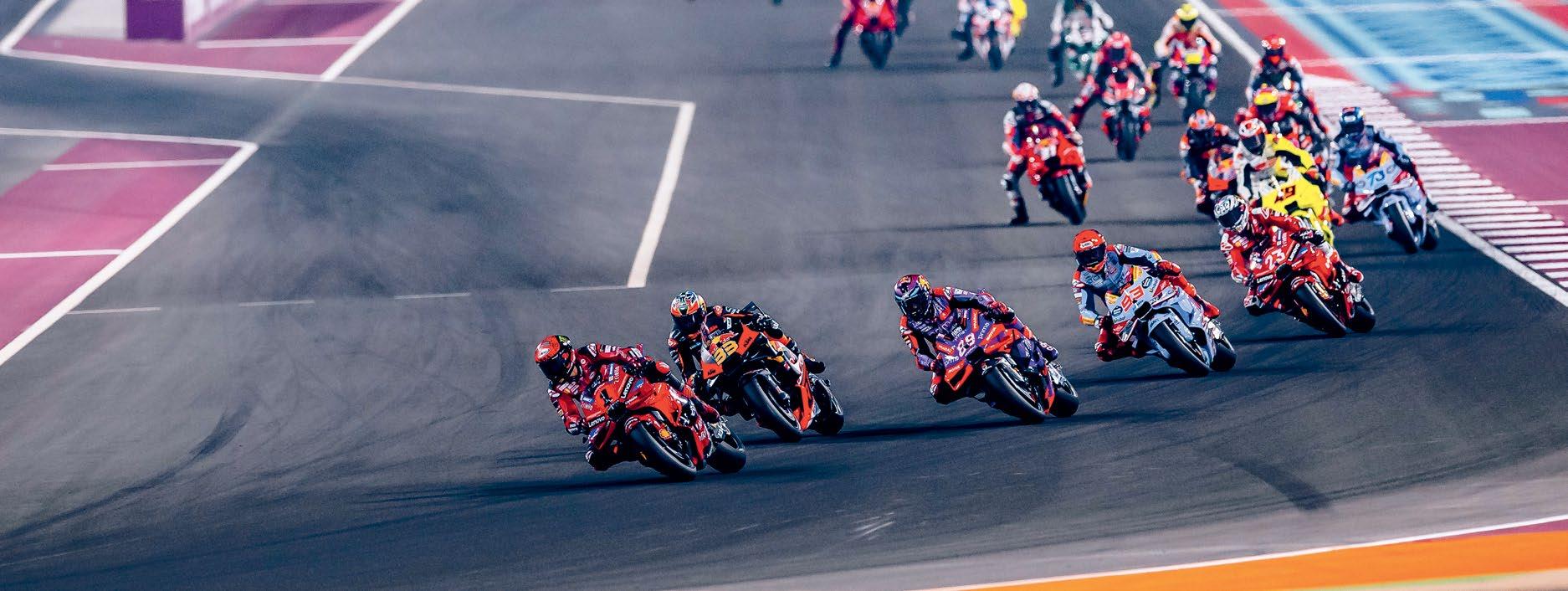





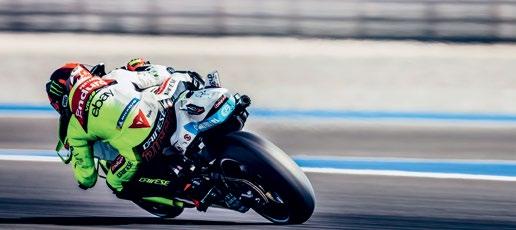




‘Never change a winning team’ is an old saying in motorsport. But what happens when a team can no longer win in its current composition? It’s time to look for new solutions. This is nothing new, it’s been like that ever since motorsport has existed. Every manufacturer wants the best possible rider and every rider wants the best possible bike. But the real legends in this ever-repeating cycle are those who had become winners and world champions on several brands. Riders like Geoff Duke after switching from Norton to Gilera, Mike Hailwood from MV Agusta to Honda, Giacomo Agostini from MV Agusta to Yamaha, Eddie Lawson from Yamaha to Honda and Valentino Rossi from Honda to Yamaha.
Motorsport lives for the moment and contracts are quite short compared to many other areas of business and life. They are usually concluded for two years, because that is a predictable period in which a team, including the rider, can adapt to a bike and get the best out of it. As many contracts are signed at the same time in MotoGP, they also come to an end in cycles. The next cycle was supposed to happen at the end of the 2024 season, but there was a real landslide this year. This was mainly due to the fact that the Japanese, Honda in particular, unexpectedly fell behind the Europeans, which made Marc Márquez, who was used to winning, increasingly restless.
For many years, almost everything at Honda revolved around him. Not very surprising after he won six world championship titles with the Repsol Honda Team between 2013 and 2019. So Honda
had signed the talent of the century until the end of 2024 on an unprecedented five-year contract. But after getting injured at the beginning of 2020 and being out for a whole season, there was suddenly no one left who could have won with the RC213V. It then took another two years for Márquez to be fully fit again, and Honda failed to develop a bike for the title hunt during the period. Álex Márquez, Pol Espargaró and Joan Mir all finished far down the field.
In 2023, Marc Márquez felt ready to fight for the world title again, but it became increasingly clear that Honda would have to take a completely new approach to development in order to compete with Ducati, KTM and Aprilia. Marc’s brother Álex performed well on the private Ducati of Gresini Racing MotoGP and was able to tell him firsthand how that bike rides, so Marc made the call after the October 2023 Japanese Grand Prix and terminated his contract early to continue with team Gresini Racing MotoGP as a private rider.
This in turn set off a wave of changes. Fabio Di Giannantonio, who was improving throughout the second half of the 2023 season, lost his place at Gresini, and the Repsol Honda Team was looking for a replacement for Márquez. In the end, an agreement was reached with Luca Marini, who was supposed to ride for Pertamina Enduro VR46 Racing Team, with Fabio Di Giannantonio then taking his spot. But that was not the end. Álex Rins, the only rider to win in 2023 with a Honda riding for LCR Honda Castrol, suffered a serious injury at Mugello and was ruled out

for almost the rest of the season. He took advantage of a release clause and signed up with Monster Energy Yamaha MotoGP, causing Franco Morbidelli to lose his seat there, only to be grabbed by Prima Pramac Racing with the help of his mentor Valentino Rossi, which in turn released Johann Zarco to LCR Honda Castrol.
But what has brought about all these changes? First of all, there’s the motivation that comes with every new beginning. Everyone who starts a new job or moves into a new home knows this. Everything is fresh and you try with all your might to make the best of it. Luca Marini and Johann Zarco got to grips with the Honda surprisingly well at the first test in Valencia, and it only took 43 laps for Marc Márquez to appear at the top of the timesheets for the first time. Álex Rins began to understand the Yamaha straight away, and Fabio Di Giannantonio was equally fast on his VR46 machinery. Franco Morbidelli, though, was a little restrained on the Prima Pramac Racing Ducati. There was nothing he could do about it because he suffered an injury before further testing. Instead, a rookie stole the show: FIM Moto2 World Champion Pedro Acosta immediately felt at home on the Red Bull GASGAS Tech3 RC16 and posted lap times straight up there with the established MotoGP riders.
But not all of the switches have brought the desired results, at least not yet. Marc Márquez has had to give up some of the privileges he had as a factory rider and experienced some
 Franco Morbidelli
Fabio Quartararo
Fabio Di Giannantonio
Johann Zarco
Franco Morbidelli
Fabio Quartararo
Fabio Di Giannantonio
Johann Zarco
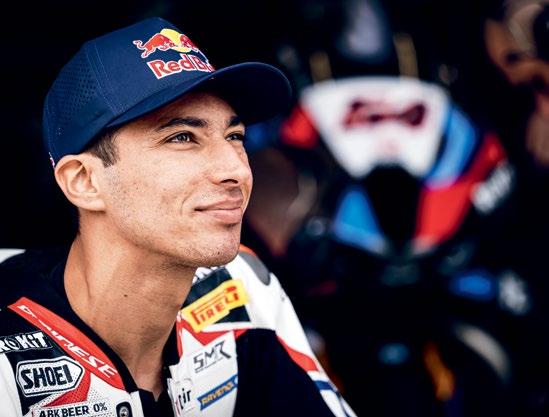
difficulties adjusting to the new bike. He focused on adapting his riding style at the tests in Malaysia and Qatar. “The fans expect me to win straight away,” he said on the last day of testing in Qatar, “But that’s not the reality. I’ve had four difficult years and have ridden the same bike for eleven years. I have to get used to the new one step by step and work my way forward.” Luca Marini and Johann Zarco have also realised how different the Honda was. “The Honda has to be ridden more over the front wheel, the Ducati has more traction at the rear, and so its power has to be used there,” explains Luca Marini. “The way a fast lap comes together is completely different. I have to adapt to that, but the technicians have to find more grip at the rear.”

The methodical approach shown by Luca and Johann has really motivated Honda’s technicians. They have produced a lot of new material and are working with the new riders with renewed freshness to return to the top. The same can also be seen at Monster Energy Yamaha MotoGP, where Álex Rins is now sparring with Fabio Quartararo. The engineers have developed a new engine that has caught up with the most powerful in the field and the team is also trying to claw its way back to the front with new technical staff. “We still have to improve on qualifying laps with new tyres, then we can be at the front. Our pace is good and we can also keep up with the others on the straights,” explained Fabio Quartararo. The boost that the rookie Pedro Acosta has brought to Red Bull GASGAS Tech3 is still there, but the // Si
Predčasni plaz menjav moštev v MotoGP in Superbiku

19-year-old has no illusions: “I set a time that looks good, then everyone goes chasing times and sets an even better one. They have so much experience, while I still have 90 percent of what I need to learn from MotoGP ahead of me.”
However, it’s not just the new but also the tried and tested who provide top performance. It’s still world champion Francesco Bagnaia and the Ducati Lenovo Team who set the tone and that’s the first target for the new arrivals.
Motivation boost
There has also been a major shake-up in WorldSBK this year. It all started with the 2021 World Champion Toprak Razgatlıoğlu, who no longer found the motivation at Yamaha and signed up with the ROKiT BMW Motorrad WorldSBK Team instead. His seat remained vacant until six-time world champion Jonathan Rea, who had found it increasingly difficult to win on a Kawasaki over the last three seasons, decided to leave the Kawasaki Racing Team after nine years and switched to the Pata Prometeon Yamaha WorldSBK Official Team. Kawasaki in turn had to look for a replacement, with the choice falling on young Axel Bassani, whose strong performances on a private Ducati have attracted attention in recent years. He actually had hopes of a place in the Aruba.it RacingDucati team, but was beaten to the punch by the 2023 FIM Supersport World Champion Nicolò Bulega, who won at his WorldSBK debut in Australia. Although there was no rider
change at Team HRC and Iker Lecuona and Xavi Vierge stayed on for 2024, a new model of the CBR1000RR-R Fireblade SP arrived for this year and José Manuel Escamez now leads the team instead of Leon Camier.
Toprak’s motivation has meanwhile worked wonders for BMW. “We are not far away. I’ll be able to win soon,” he said immediately after the first test, unleashing a burst of energy from the BMW technicians and managers before catapulting the BMW M 1000 RR to fastest times in the subsequent tests (The Turk won already at the second racing weekend in Spain). Some riders needed more time to get used to the new bikes in the first tests and were not at the forefront of the action. On the other hand, Alex Lowes, who is no longer in Jonathan Rea’s shadow in the Kawasaki Racing Team and has been able to bring over Rea’s former crew chief Pere Riba, has risen to top form at the Phillip Island race weekend. So sometimes a change within one’s own team can bring enough new motivation.
But this is just the beginning. As the season progresses, both teams and riders will become more familiar with each other, and only then will we be able to see what is the end result of all these changes. Just look at the WorldSBK series, where in the first races of the season, riders from different teams with different brands of motorcycles fought for podium positions, something you might not have expected from the results of the pre-season testing.

V MotoGP in Superbiku je moštva zamenjalo toliko dirkačev kot že dolgo ne. Kaj je bil vzrok in kaj posledica tega? Ali so res vsi šli na boljše? »Nikoli ne menjaj zmagovalne ekipe,« je star pregovor v motošportu. Kaj pa, če ekipa s svojo sestavo ne more več zmagovati? Potem je čas za iskanje nove rešitve. Vsak proizvajalec vedno želi najboljše možne dirkače in vsak dirkač želi najboljši možni motocikel. Toda prav dirkači, ki so postali zmagovalci in svetovni prvaki so postali prave legende. Pogodbe običajno veljajo dve leti, saj je to predvidljivo obdobje, v katerem se lahko ekipa, vključno z dirkači, prilagodi tehnologiji in iz nje potegne najboljše. Ker se veliko pogodb v MotoGP sklepa hkrati, se te tudi ciklično iztekajo. Naslednje naj bi se šele konec leta 2024, vendar ne bo tako. Predvsem zato, ker so Japonci, predvsem pa Honda, povsem nepričakovano zaostali za Evropejci. Marc Márquez, ki je bil vajen zmagovati, je postajal vse bolj nemiren. Oktobra 2023 se je odločil, da predčasno prekine pogodbo in nadaljuje kot zasebni dirkač pri ekipi Gresini Racing MotoGP. S tem je sprožil plaz menjav.
Xavi Vierge Toprak Razgatlıoğlu

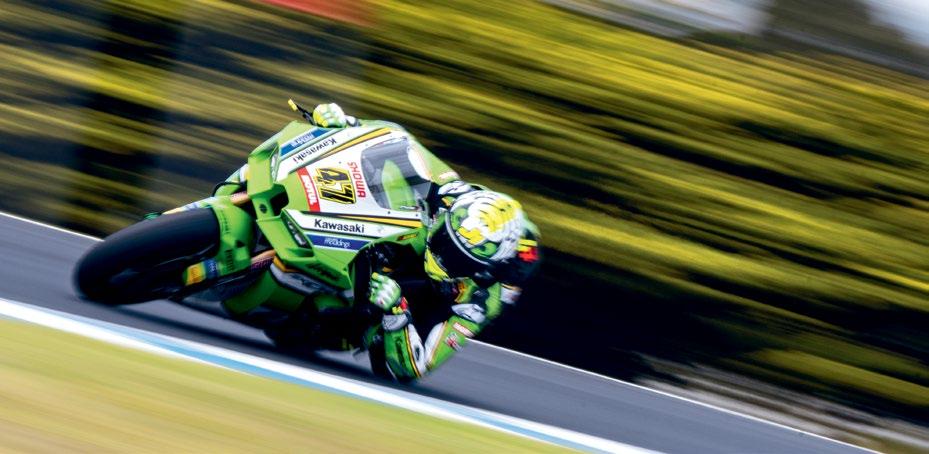


Akrapovič exhaust systems are designed for riders who demand maximum performance from their motorcycles. They feature exceptional production quality, hi-tech materials, increased engine performance and all come with amazing sound and appearance as standard. The change is also visual, as Akrapovič mufflers perfectly fit the exterior line of modern motorcycles and add a clean racing image.



BMW R 12 nineT
+ 0.9 kW (+ 1.2 hp) at 6,200 rpm
+ 1.6 Nm at 6,200 rpm
- 0.4 kg (- 10.6 %)

Yamaha YZ250F / YZ250FX
+ 0.5 kW (+ 0.7 hp) at 12,500 rpm
+ 0.5 Nm at 12,000 rpm
- 0.8 kg (- 19.7 %)

Yamaha XSR900 / GP
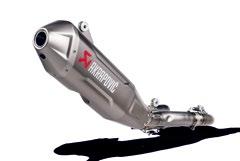

Yamaha MT-09 / FZ-09 + 1.5 kW (+ 2.0 hp) at 10,000 rpm + 1.3 Nm at 9,700 rpm
+ 1.4 kW (+ 1.9 hp) at 9,100 rpm + 1.4 Nm at 9,800 rpm

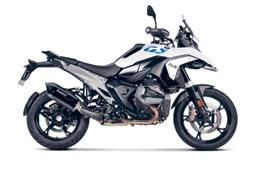
BMW R 1300 GS
+ 1.4 kW (+ 1.9 hp) at 7,600 rpm
+ 4.5 Nm at 2,300 rpm
- 0.2 kg (- 9.3 %)

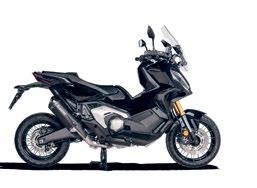
Honda X-ADV750 / NSS750 Forza

+ 0.4 kW (+ 0.6 hp) at 6,350 rpm
+ 0.9 Nm at 3,250 rpm
- 1.0 kg (- 29.4 %)
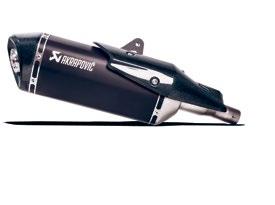
Check out the latest Akrapovič aftermarket exhaust systems and optional carbon-fibre products for cars. By using only the best materials in combination with high-tech knowhow and exquisite craftsmanship of Akrapovič employees, the company has created a package that stands out from everything else on the market.
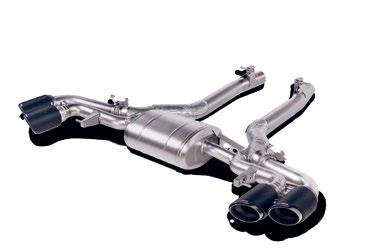
BMW X5 M / X5 M Competition (F95) / X6 M / X6 M Competition (F96) + 7 kW (+ 9.5 hp) at 5,700 rpm, + 15 Nm at 2,550 rpm, - 8.4 kg (- 40.6 %), titanium, Akrapovič Sound Kit
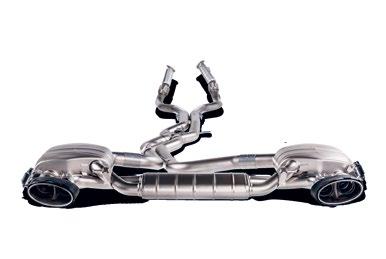
Audi RS 6 Avant / RS 7 Sportback Performance (C8) + 11.6 kW (+ 15.8 hp) at 6,150 rpm, + 17.9 Nm at 6,150 rpm, - 10.4 kg (- 24.7 %), titanium, stainless steel, Akrapovič Sound Kit, Rear Carbon Fibre Diffuser - Matte and High Gloss
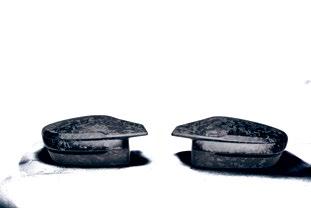


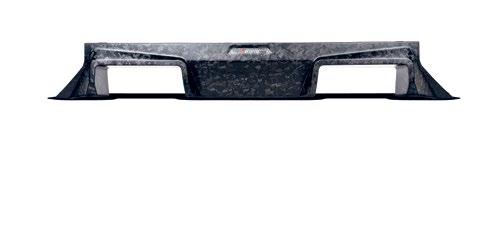
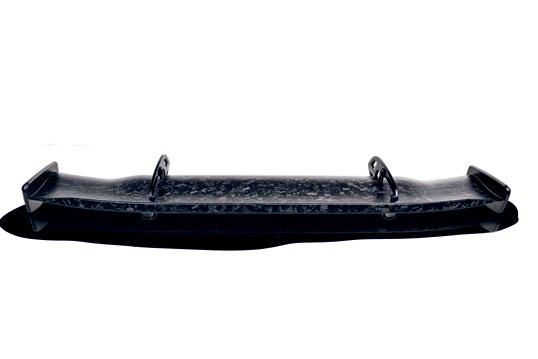
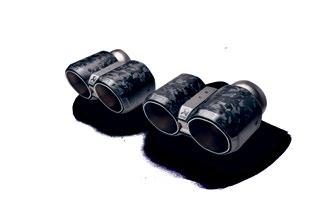
Have you ever wondered how competitors at the Dakar Rally find their way through the desert, or how the FIA World Rally Championship (WRC) drivers almost seem to fly through the twisting and turning narrow roads? Part of the answer is good navigation. Without navigators, such races could not exist, because the drivers would be ‘blind’. But how, if at all, does navigation in the Rally-Raid championship differ from navigation in the WRC?
Roadbooks in the WRC are used by the drivers and co-drivers during reconnaissance to create their own personal pace notes, which are then read back during stage racing.


If you are passionate about racing in the desert or actively follow rally races, then you know that next to every driver sits a co-driver, who guides the former through the stage, across challenging terrain, and unknown territory with loud instructions. The co-driver gets their information from a roadbook which contains a series of drawings, symbols, pictograms and instructions to steer the drivers along the route, as well as detailed
information about the terrain and the location of potential hazards. The symbols used are standardised, making it easier for racers to understand information about, for example, distances, directions or important points. Roadbooks also help with regards to safety, as they warn of potential dangers and other obstacles on the route. In short, they are essential for completing the rally.
WRC roadbooks moreover contain accident

procedures, important contacts, day-byday itinerary and maps, an overview of key locations such as service parks, regroups, refuelling zones, and the key for all the symbols and diagrams used. At the back, there is also information about the alternative route to follow in case a stage is abandoned. Drivers must strictly follow the roadbook’s instructions, as even a small mistake can result in a signifi cant time penalty. During the
competition, drivers can only complete the route in accordance with these instructions and they must locate and pass each waypoint in correct order. Special attention is paid to safety waypoints, sections of the route where drivers have to reduce their speed due to possible hazards, which are marked in the roadbook and also signalled visually and audibly, thus making sure the drivers get notifi ed of the danger.
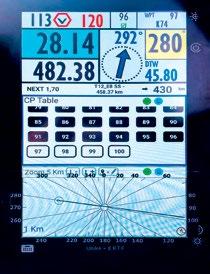
Instructions are provided in an easy-to-follow format, as co-drivers must be able to read and interpret the roadbook quickly and accurately to provide correct navigational advice. In addition to the roadbook, they also use a GPS odometer to measure the distance and monitor their progress. The odometer helps them check their location and distance from the next waypoint or hazard, allowing them to adjust speed and direction accordingly. In order to use the roadbook effi ciently, co-drivers must also be able to anticipate changes in the terrain, so as to allow drivers to adapt their driving and navigation. Good communication between driver and co-driver is essential here, as they must cooperate in pushing through challenging environments and conditions. But how do Rally-Raid roadbooks differ from their WRC counterparts? Thomas Quandt, CMO at the X-raid team, which uses Akrapovič exhausts in the FIA World Rally-Raid Championship and the Dakar Rally (MINI JCW Rally Plus and X-raid 1000R Turbo) explains, “Roadbooks in the WRC and Rally-Raid are completely different – in everything! It starts with the fact that there is no reconnaissance in Rally-Raid. At over 7,000 kilometres, ‘recce’ is simply impossible. Co-drivers therefore have to fi nd their way the fi rst time with the help of the roadbook. In addition, the route in Rally-Raid does not always follow a path or a road, but sometimes leads completely off-piste. When roadbooks were still issued on paper at the Dakar Rally, co-drivers received them upon entering the bivouac. They then worked on their copies for hours in the evening. They coloured them in according to their preferences and highlighted important information. They also practised how to pass on this information to the driver. As an interim solution, coloured paper roadbooks were issued in which no changes were allowed. Now there is a tablet, which is only handed out shortly before the start.”
This means that the ability to read the
After they complete their careers, motorcycle riders are highly sought-after as navigators for drivers.
roadbook and navigational skills are essential at the Dakar, where the top speed is limited to 170 km/h. Jordi Viladoms, a 10-time Dakar participant and runner-up at the 2014 edition in the motorcycle category (after they complete their careers, motorcycle riders are highly sought-after as navigators for drivers), is clear, “Even after we got GPS, the roadbook stayed in the sport, especially at Rally-Raid and WRC events. At the Dakar Rally, it is more important to be able to navigate than to be the fastest through the desert. The Dakar Rally doesn’t try to make navigation easier, it’s just the opposite! It makes it more diffi cult!” Rally-Raid and WRC roadbooks differ in yet another way; roadbooks in the FIA World Rally-Raid Championship are digital only and the sole real aid for the crew during the stages. Roadbooks in the WRC are meanwhile still made of paper and are used by the drivers and co-drivers during reconnaissance to create their own personal pace notes, which are then read back during stage racing.
Seb Marshall, event coordinator and Hayden Paddon’s former co-driver in Hyundai Motorsport, which uses Akrapovič exhausts on Hyundai i20 N Rally1 Hybrid racing cars in this year’s WRC, explains what reconnaissance really means.
“Reconnaissance is the crew’s opportunity to drive over the stages and familiarise themselves with the route. It takes place in the days preceding the rally when the route can be driven on for a maximum of two times at reduced speed (usually at 80 km/h max.) in a standard car. Whilst driving over the stage for the fi rst time, the driver will dictate the pace notes that they want to hear during the rally to the co-driver who writes them down in a book. The second pass allows for the notes to be fi ne-tuned, with the co-driver reading them back and making any necessary adjustments. The crews also record the second pass so that they can review the video later.”

He adds that each crew uses their own pace note system, unique to them. Corners are categorised into numerous variants based on the angle or speed to be carried through them. They are always accompanied by the direction too – left or right. Alongside this basic info, there are many extras that describe the road in more detail – corner length, does it open or tighten, junctions, crests, bumps and jumps –there are many possible combinations! “The aim is to give drivers a picture in their mind of how to approach each section in the fastest way possible. Co-drivers must deliver this information during racing at the right time so that it can be processed correctly. Describing the severity of corners differs greatly between drivers. Some describe them using words like slow, medium, fast, fl at, and others name the gear to be used while driving through (one to six) and still others use actual corner angles.” Many drivers rely on experience and their observation of each corner as they drive through it during a ‘recce’ making a judgement on its severity more of an art!
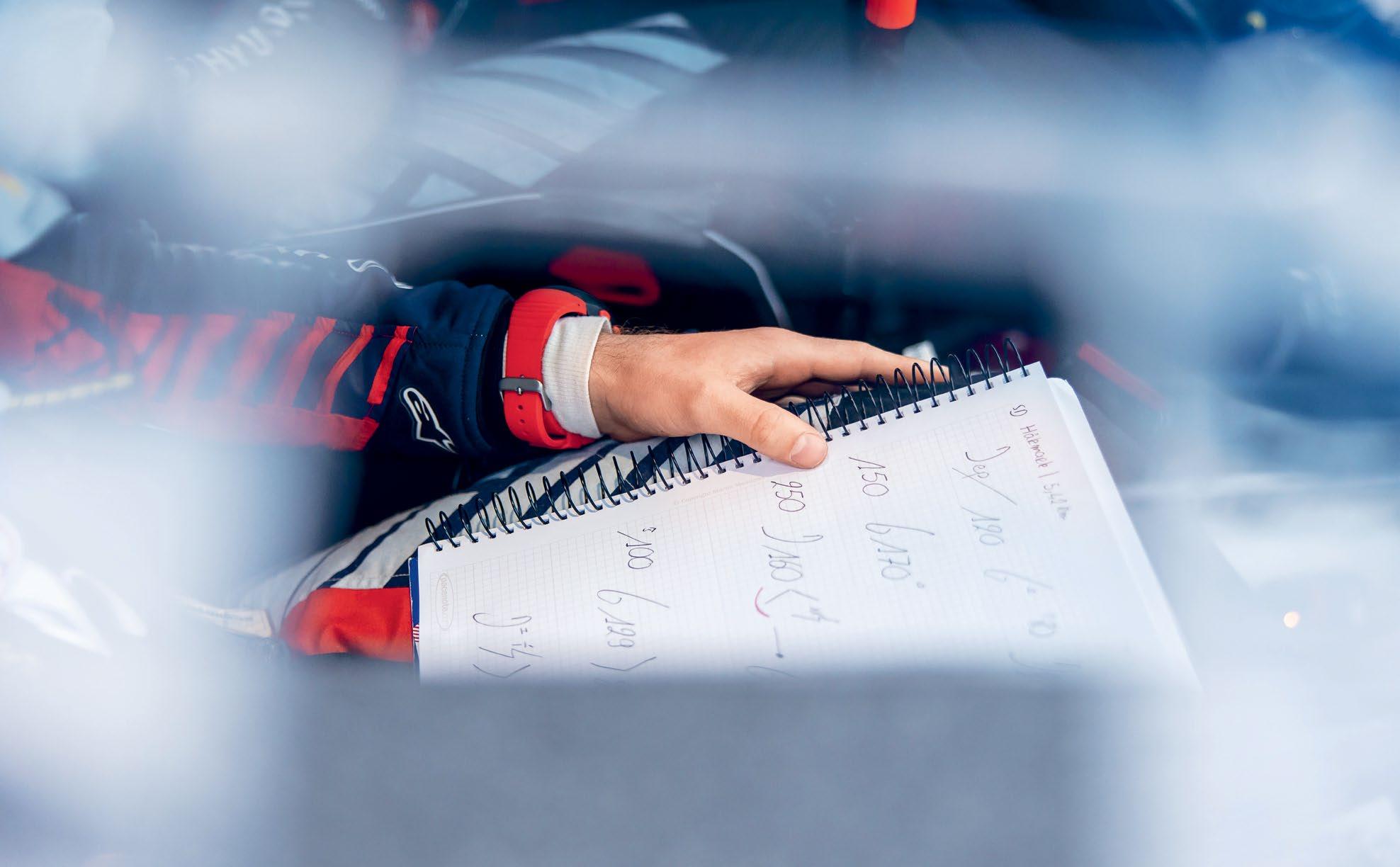


In short, roadbooks are essential for completing the rally.

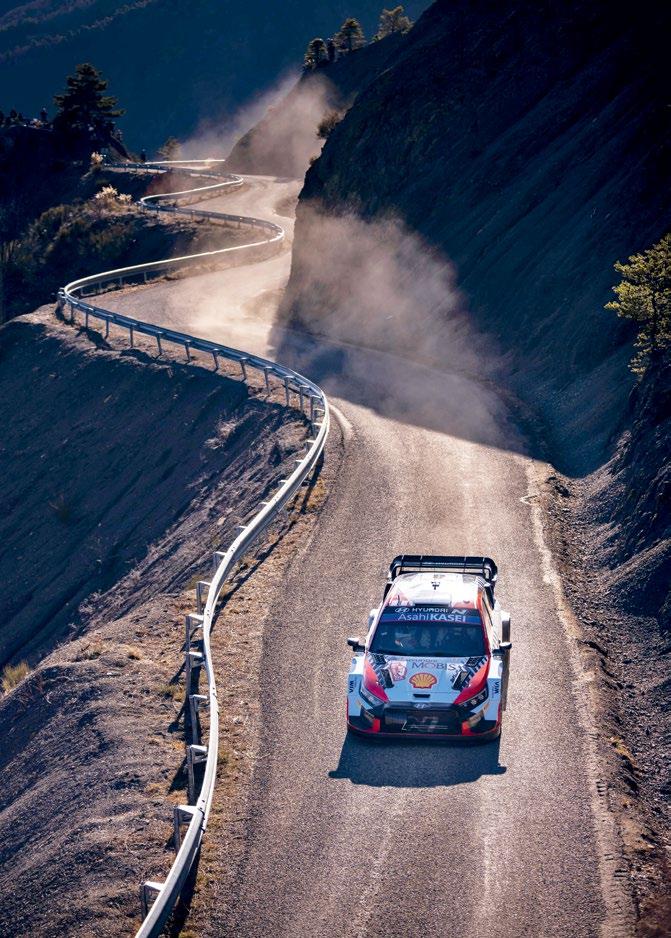



Jacky Ickx is 10 minutes early for our interview in a hotel lounge just behind Place de la Concorde in Paris, the seat of the FIA –Federation Internationale de l’Automobile. He is dressed smartly and casually and in no way betrays he will turn 80 next year. His mind is sharp, his memories vivid and you could easily imagine that he just came back from his, who knows which, Paris-Dakar. While one of the best racing drivers of all time, Jacky never became a Formula 1 World Champion. He won eight Formula 1 races and finished second overall twice, but his nickname ‘Monsieur Le Mans’ comes from his
six victories at this prestigious 24-hour race. He also won the 1983 Paris-Dakar Rally, was the champion of the Can-Am championship in 1979 and stood on the podium at numerous endurance and other races. Jacky is still a regular guest and driver at vintage car meets and an annual participant at the legendary Mille Miglia. He also chose the road for this trip to Paris from Monaco, where he resides with his second wife, musician Khadja Nin. Farmer strikes blocking the highways meant he spent 13 hours on country roads, but he enjoyed it anyway.

I bet you liked the trip because you drive a nice, sporty car?
Not really. My current car is a VW Polo GTI. Very comfortable and fast enough.
I once read you never got a speeding ticket. True? I hardly get any. I drive in a relaxed and smooth manner, not too fast anymore.
Your father Jacques Ickx was a motoring journalist and a racing driver himself, but you didn’t really take to racing initially, right?
As a kid, I didn’t like it. When I was 10, my father took me to the 1955 SpaFrancorchamps Formula 1 race. I met Fangio, Moss and other racing heroes, but wasn’t impressed at all. Motorsports seemed very boring to me as a child. My dream was to do something with nature.
But you got a motorcycle as a present when you were 15? It doesn’t really fi t...
I was a bad student. Really bad. I just wasn’t interested. My parents were worried, but I didn’t care. They kept promising me larger and larger gifts if I improved. I always said I would, but never really meant it. So, one day I got a 50 cc Zündapp motorcycle. That was fun, I started riding more, going to races and soon realised I could be fast.
Your competition back then in Belgium included Roger de Coster whom we interviewed in our previous issue. You beat him once. Did that victory sway you away from becoming a gardener? Never having any success, always being bad at everything and getting bad grades is not very encouraging for a young person. But I achieved my fi rst success on a motorbike, got my fi rst recognition and gained selfconfi dence. I was fi nally good at something. My parents were of course proud of my success later in life, but I still feel anguish today, when I remember how they feared for my life. I wasn’t afraid at all, but they were worried sick every weekend until Monday. In my era of racing, the 60s and 70s, there was no safety, the sport was very dangerous and we lost a lot of colleagues. I paid a very high price for my success from that viewpoint.
Your statistics are really impressive. You were almost unbeatable at the old Nürburgring, which Jackie Stewart called “Green Hell” and you, I assume, simply enjoyed?
We knew no fear. If you really like doing something, even if it’s dangerous, it’s your choice and then you don’t feel afraid. If you approach with fear, you’ve already lost. When you are young – and this is true of us all – you think you’re immortal. It’s the privilege of being young. The older you get, the more precious time becomes. I recently read a book titled ‘Your Second Life Begins When You Realise You Only Have One.’ After you realise that, your attitude dramatically changes.
Was your approach to racing more philosophical or instinctive?
I don’t believe it’s about speed or getting through a corner fast. In my case, it was about fi nally being successful at something. Then there is the matter of your approach and also of luck. And you must be realistic, be honest with yourself, analyse yourself throughout your life. For me, this meant fi nding the right time to open or close a chapter in my career. I’ve had many different types of lives in my long time on this earth. You have the motivation, passion, desire, you reach the top and then you want to stay there for as long as possible... But the way down is much more slippery, believe me. Then it becomes vital to fi nd new motivation, to reset yourself for something new. I like to think, I was quite good at that.
In 1973 during qualifying for the 1,000-km race you set a lap record in a Ferrari 312 PB at the old 14.1 km Spa-Francorchamps circuit with an average speed of 263.4 km/h. Can you still believe it today?
Just barely. I remember the old Spa, ordinary roads with turns, a hairpin, then Raidillon, my god. If I look at it today, I realise that I’m not the same person anymore. It was so fast.
After retiring from professional racing, you often mentioned the importance of a team in motorsport. It might be seen as an individual sport by the fans, but is in fact a team sport. True. It’s like an iceberg. What you see is the tiny part above the sea, but most of it is hidden under the surface. There are plenty of people who design, build and prepare the car. Without them, you’re a nobody. You can only win with the passion and effort of all these invisible people. But you also need a good car. I was lucky to have driven many good, fast cars. If you don’t have that, you struggle, but you still want to be the best. You take greater risks to remain competitive and that drastically increases the danger of having an accident.
Most of your successes in Formula 1 or Le Mans date back to the 60s and 70s. Do you still remember these races at Nürburgring, Monza, Spa, Le Mans…?
First of all, I live in the present and future. I’m interested in today or tomorrow, even at my age. The past never interested me much. If you ask me, for example, about winning the Canadian Grand Prix I don’t remember the year anymore. I won it with Ferrari in 1971 or 1972 but don’t have any memory of that race at all. Nothing. [Jacky actually won the Canadian GP in 1970 at Mont-Tremblant – Ed.] But I remember vividly and in detail some races where I fi nished eighth, for example, or retired, which are much less important for the statistics. I’m not talking about what I remember now, I was like that 40 years ago. I never liked to talk about myself too much. (laughs)

It’s fantastic to be a hunter. You have no limits, you have nothing to lose, you go flat out. So I did. ole night long.
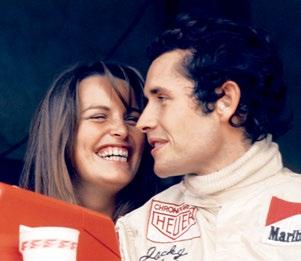

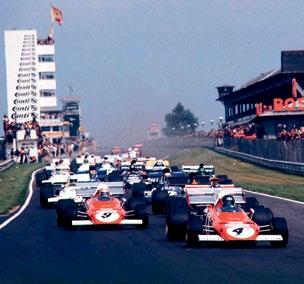







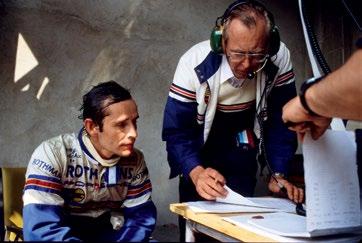
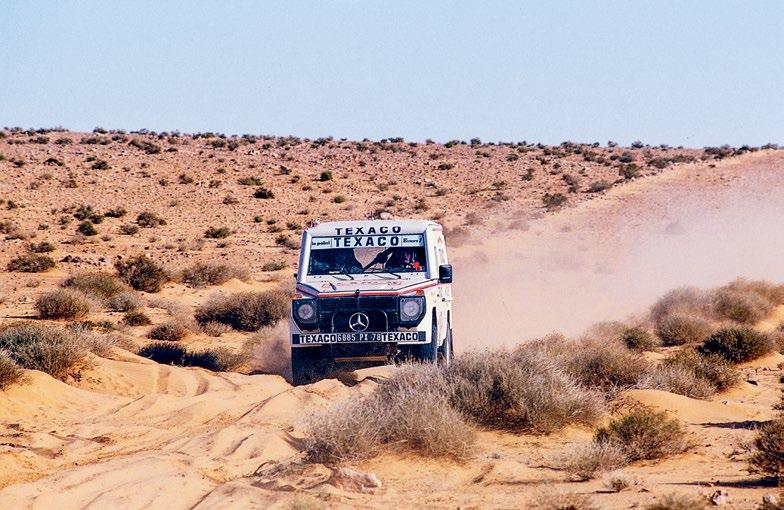
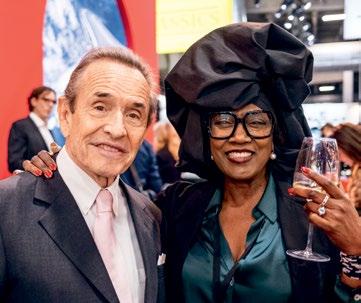


You raced in many different categories, something new every weekend. How was that possible?
It was a different era. We were free, we had no sponsors and no obligations apart from racing at the weekends. If there was no Formula 1 race scheduled, I was free to race anything else. We all had our priorities, but could otherwise freely choose where to race. That has defi nitely changed. Can you imagine a Ferrari Formula 1 driver also racing in an endurance championship for Audi today? You can’t! But we could and it was a real privilege. I did endurance races with Ford and Formula 1 with Ferrari. FIA made a calendar where the two didn’t overlap. Not just me, Jack Brabham, Graham Hill, Jim Clark, we were all doing it. A team, even Formula 1 or Le Mans, consisted of fi ve people back then. All
the racers stayed in the same - or at maximum in two - hotels. We were professionals in a way, but we were actually amateurs.
You were racing for Enzo Ferrari in Formula 1, but also competed in other categories. Even in those days he was not an easy team boss. Do you agree?
There is no but, when I talk about Enzo Ferrari. Never.
In what sense?
He liked me very much. No doubt about that. We had many disagreements, but it never affected our relationship. But yes, I was probably disruptive. I was young and fearless. I left Ferrari after the 1968 season because they couldn’t provide me with a car for endurance races. I went to Ford in 1969 and raced alongside Jack Brabham in Formula 1. I returned to Ferrari in 1970 when Mauro Forghieri built a magnifi cent car, the B1. I won some victories in the following two years and twice fi nished second in the championship. In those days, there were no computers and telemetry so the ‘annual evolution’ of good cars like today didn’t happen. A designer could take a wrong turn and create a non-competitive vehicle in the following year. This happened to Ferrari after two years. I thus left the Italian team in 1973 after they decided to take a break from Formula 1 for a few months to await a new chassis. This meant they would have to miss the German
GP at Nürburgring and I wanted to race at my favourite circuit. I managed to get into the third, spare McLaren. Denis Hulme and Peter Revson were upset that team boss Teddy Mayer gave me the car and then got even more upset after I outpaced them in qualifying by eight and twelve seconds, respectively. I was immediately fast in a new car. The settings were quite basic at that time, but one normally needed some time to adjust the car to one’s driving style and I drove with the feel in my arms and bottom. I fi nished third. Because of Hulme and Revson’s anger after qualifying, the team reduced my revs by 500 rpm and gave me the hard Goodyear tyre for the race. I didn’t know that, but I still outpaced Hulme by 45 seconds and Revson by even more. With that car I would have given a hard time to world champion Jackie Stewart and his Tyrrell in 1973. Some years ago I was in New Zealand and a journalist told me that Phil Kerr, McLaren team manager at that race, beat himself over the head for listening to his drivers and giving me a second-rate car.
‘Monsieur Le Mans’ was probably born in 1965 at the exceptional 82-hour ‘Marathon de la Route’ held at the old Nürburgring where you and teammate Gilbert Staepelaere finished second in a Ford Mustang. It sounds incredible that two drivers could drive for a whooping 82 hours. First of all, you need a good car, like in every motorsport category. Second, you must finish the race and many cars back then didn’t. You had to pay a lot of attention to the gears, clutch, engine... It wasn’t an endurance race for the driver, but for the car. I was paired with the greats like Brian Redman, Derek Bell, Mario Andretti, Jochen Mass and we won a lot of endurance races, so one wonders, why Le Mans? You have to be lucky. It’s like playing roulette in a casino in Monte Carlo, and winning six times on number six. Tom Kristensen’s nine victories there are a miracle and he will hold this record forever. You have to be lucky to always be in the right car. A factory team usually enters three cars for the race, two of them likely retire and one wins. So you need a bit of luck to sit in the right one.

Did you like racing at night?
The main thing is to never give up. Let me tell you about my famous 1977 Le Mans victory. Henri Pescarolo and I were out after three hours with an engine malfunction and the team’s second Porsche’s was in 41st place, eight laps behind, basically hopeless... So I jumped in as the spare driver for that car. It’s fantastic to be the hunter. There are no limits, you have nothing to lose, you go fl at out. So I did. Whole night long. Every hour I gained a lap or so, we were soon 31st , then 25th , only three laps behind the leader. It was rainy, foggy, dark, the lot. We were also lucky the car survived at the end and we won. I didn’t drive the last stint as I was almost dead from the exhaustion of going fl at out for more than 10 hours.

You have the motivation, passion, desire, you reach the top and then you want to stay there for as long as possible... But going down is much more slippery, believe me. Then it becomes vital to find new motivation, to reset yourself for something new.
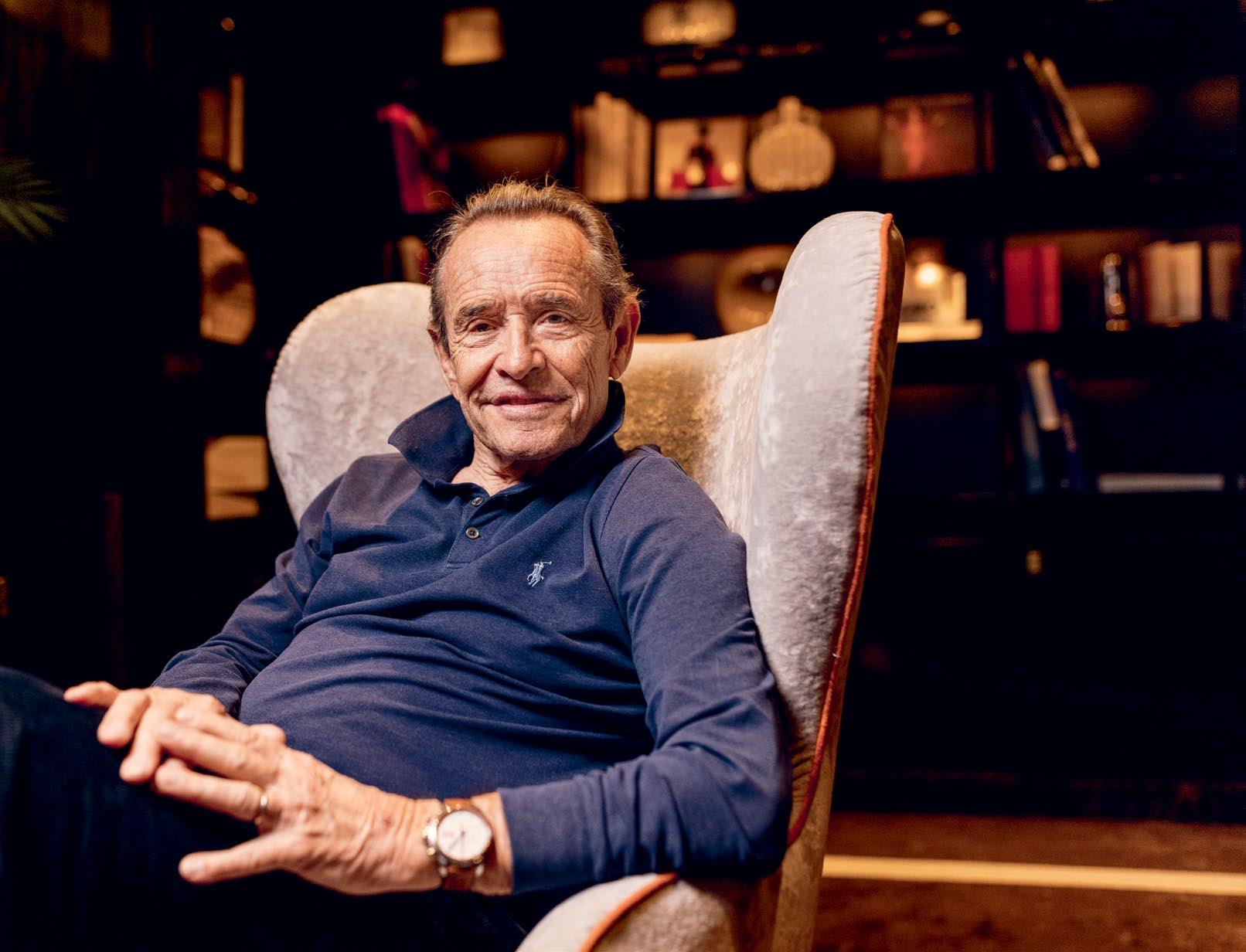

You regard the Le Mans victory of 1977 as probably your biggest triumph, but you also often met with tragedy. At your first Formula 1 race at Nürburgring in 1966, you were unhurt after your Formula 2 car crashed with John Taylor, who later died. 20 years later in Spa-Francorchamps your car made contact with Stefan Bellof in Eau Rouge. In the crash, Bellof was killed and you escaped unhurt. At the 1991 Pharaons Rally in Egypt your Citroën flipped over. You suffered no injuries, but your co-driver Christian Tarin died. Such events must leave a mark.
You can live on, but you can never heal from such tragedies. Surviving them is amazing, but you also come to terms with the deaths. Remember, motor racing is an accepted risk. It’s a free choice. You have good and bad moments. I can only repeat, you begin your second life, when you realise you have only one. I’ve had many lives so I know it’s a gift. Savour it. Now and in the future.
There is another race that changed your perspective on life. Paris-Dakar. You entered many times and won in 1983 in a MercedesBenz G-Class with famous French actor Claude Brasseur as co-pilot. What fascinated you so much about Africa?
I was mainly motivated by racing and winning. But I saw the Paris-Dakar Rally as much more

than just an event. It was a three-week, 10,000-km off-road race. You can’t cheat there, nature won’t let you. You face who you really are. And we found out, there are many people in Africa that don’t have the same facilities as we do. This gap still exists today. You get to see the reality and can judge by yourself, instead of just following the media. You learn about solidarity and the many invisible people in our lives. You see all of them and it changes your life, too.
Actually, you often mention that we have to be lucky to have a good life. But luck has to come from somewhere, right?
Yes, it’s a mystery. There are good people who seem to attract all the problems. I’m defi nitely not in that category, you are right. That’s part of the mystery. What is fate? A sequence of moments and then you are lucky enough to survive. What is luck? What is destiny? What is timing? I don’t know, but it exists, there are people who seem to attract all the problems. Are they not as good? Not necessary, it happened to the best as well. In French we have a sentence ‘You can’t kill bad guys!’ It’s important to live your life in the best possible way and try to improve all the time. Obviously, I’m a better person now than I was at 20.
Jacky Ickx: »Le Mans je kot ruleta«
Jacky Ickx je prišel na intervju v pariški hotelski salon tik za trgom Place de la Concorde, kjer ima sedež FIA – Mednarodna avtomobilistična zveza, deset minut pred dogovorjenim časom. Oblečen je športno-elegantno in niti slutiti ni, da bo prihodnje leto star 80 let. Njegov um je oster, spomini živi in zlahka bi si predstavljali, da se je pravkar vrnil s katerega od svojih številnih relijev Pariz-Dakar. Čeprav je eden najboljših dirkačev vseh časov, nikoli ni postal svetovni prvak formule 1; zmagal je na osmih dirkah formule 1 in dvakrat končal na drugem mestu v skupnem seštevku. Vzdevek Monsieur Le Mans dolguje šestim zmagam na prestižni 24-urni dirki. Leta 1983 je zmagal tudi na reliju Pariz-Dakar, slavil v prvenstvu Can-Am leta 1979 in bil na zmagovalnem odru na številnih vzdržljivostnih in drugih dirkah. Še vedno je redni gost in voznik na srečanjih klasičnih avtomobilov ter vsako leto sodeluje na legendarni dirki Mille Miglia. Vzdevek Monsieur Le Mans se ga je oprijel leta 1965, ko je z moštvenim kolegom Gilbertom Staepelaerejem v Fordu Mustangu zasedel drugo mesto v izjemni 82-urni dirki Marathon de la Route na starem Nürburgringu. Sliši se neverjetno, da bi dva voznika zlahka preživela 82 ur na cesti. »Prvič: potrebujete dober avto. Drugič: dirko morate preživeti in veliko avtomobilov tega takrat ni zmoglo. Še posebej morate biti pozorni na menjalnik, sklopko in motor. To ni bila vzdržljivostna dirka za voznika, ampak za avto. Dirkal sem z velikani, kot so Brian Redman, Derek Bell, Mario Andretti in Jochen Mass, in zmagal na številnih vzdržljivostnih dirkah. Torej se lahko vprašate, zakaj Le Mans? Imeti morate srečo, da ste vedno v pravem avtu. To je kot ruleta v igralnici v Monte Carlu, kjer šestkrat zmagaš s številko šest. Devet zmag Toma Kristensena je čudež in tega rekorda ne bo nikoli izgubil,« je v zanimivem pogovoru med drugim povedal Jacky.
“Being inspired by the natural reflections in the paint, I saw countless ways to design the car – this is just one of them,” says Hanna Schönwald, a talented industrial designer, artist and car enthusiast from Hamburg, Germany, who painted her unique lines onto a Porsche 911 (964) as part of the Porsche 964 art car project. “I approached the car as a fully developed tangible object and treated it accordingly. My top priority was not to use my art to override what has already been completed, but rather to work with the existing shapes as much as possible.” We love it! The 28-year-old also did work for TAG Heuer and painted André Lotterer’s Le Mans helmet. You won’t find her on the road, though. Check her garage, where she’s working on classic cars, or art and design projects.
hannaschoenwald.com

Nigel Mansell, one the most successful British drivers of all time, started the 1992 season with five straight wins, a record only matched by Michael Schumacher in 2004. After winning the British GP at Silverstone, he surpassed Jackie Stewart’s record of 27 wins with his 28th, becoming the (then) most successful British driver of all time. Mansell also set the thenrecord for the most wins in one season (nine) as well as starting from pole position for a total of fourteen times in that year. It’s not surprising that this lithograph of the Williams ‘Red 5’, signed by the master driver himself, is a must have. Limited edition print, 60 x 40 cm.

thegpbox.com
AlphaTauri is Red Bull’s premium clothing brand. Forging a new path in fashion, the brand fuses textile technologies, purposeful design, aspirational styles and premium materials. Clothes have a different meaning now. Don’t think so? Just take a look at this heatable jacket from the Heatable Capsule Collection. It incorporates cutting-edge technology in garments design and an integrated heating system in two zones. Strategically placed above the kidney area and front pockets, their temperature can be adjusted by multiple levels via an app. Heat-retaining fabrics such as sheep wool padding, cork insulation and heat-conductive lining then evenly distribute the heat for maximal comfort. Oh, it’s also water and wind resistant. Pure magic, right?
alphatauri.com

To celebrate the centenary of Le Mans, Motor Sport Magazine designed a special issue tracing the history of the French classic. Starting with the 1920s and finishing with a preview of last year’s event, ‘Twice Around the Clock’ celebrates each decade, highlighting the star cars, celebrated drivers and race results. Illustrated with rare archive imagery, containing brilliant writing from Motor Sport Magazine’s award-winning contributors and printed on thick gloss paper, this issue is the perfect coffee table style celebration of the world’s greatest race. ‘Twice Around The Clock - Le Mans 100th Anniversary Collector’s Edition 1923 - 2023 by Motor Sport Magazine’ is available in printed and digital form.
motorsportmagazine.com

Looking for high-tech accessories with an elegant and functional design? Bold and clean lines?
An emphasis on Ferrari’s signature red and its irreplaceable Prancing Horse? Look no further than the BeoSound 2 3rd Gen Ferrari Edition Speaker. Part of the exclusive edition created by Bang & Olufsen for Ferrari, this captivating device offers multiroom audio power for a long-range, highdefinition playback, while its clean lines, surprisingly small footprint and iconic design, with integrated Acoustic Lens Technology and the Active Room Sense function, ensure a flexible sound experience that can adapt to every room in your home.
store.ferrari.com
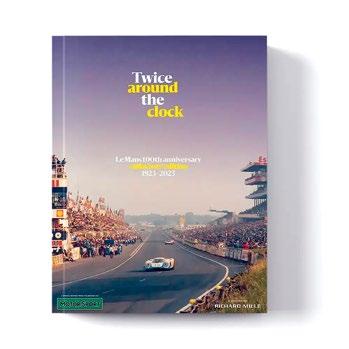
If you can’t get enough of the exciting world of fast cars, we have something special for you – a full-size display helmet signed by Alain Prost. Do you remember the 1990 British Grand Prix at Silverstone? Nigel Mansell qualifies on pole, proving there is plenty of pace in the Ferrari, before retiring just nine laps from the finish to hand victory to his teammate Alain Prost. This full-size, hand-painted, Snell rated helmet, exactly replicates Alain’s helmet from that race. Hand signed on the visor, this superb piece will be a star of any collection.
motorsportmagazine.com

As much as motor sport has become a corporate show at the top levels, there is still something about the Dakar that remains primal once the crews drive off, something that even the current WRC does not have. Rally-Raid really is a battle of man and machine against nature and the clock. But every Dakar story begins much earlier than at the start of the world’s best known endurance off-road race and even then it’s always a race against time. We followed the trials and tribulations of preparing a Prodrive Hunter for arguably the toughest race on the planet.

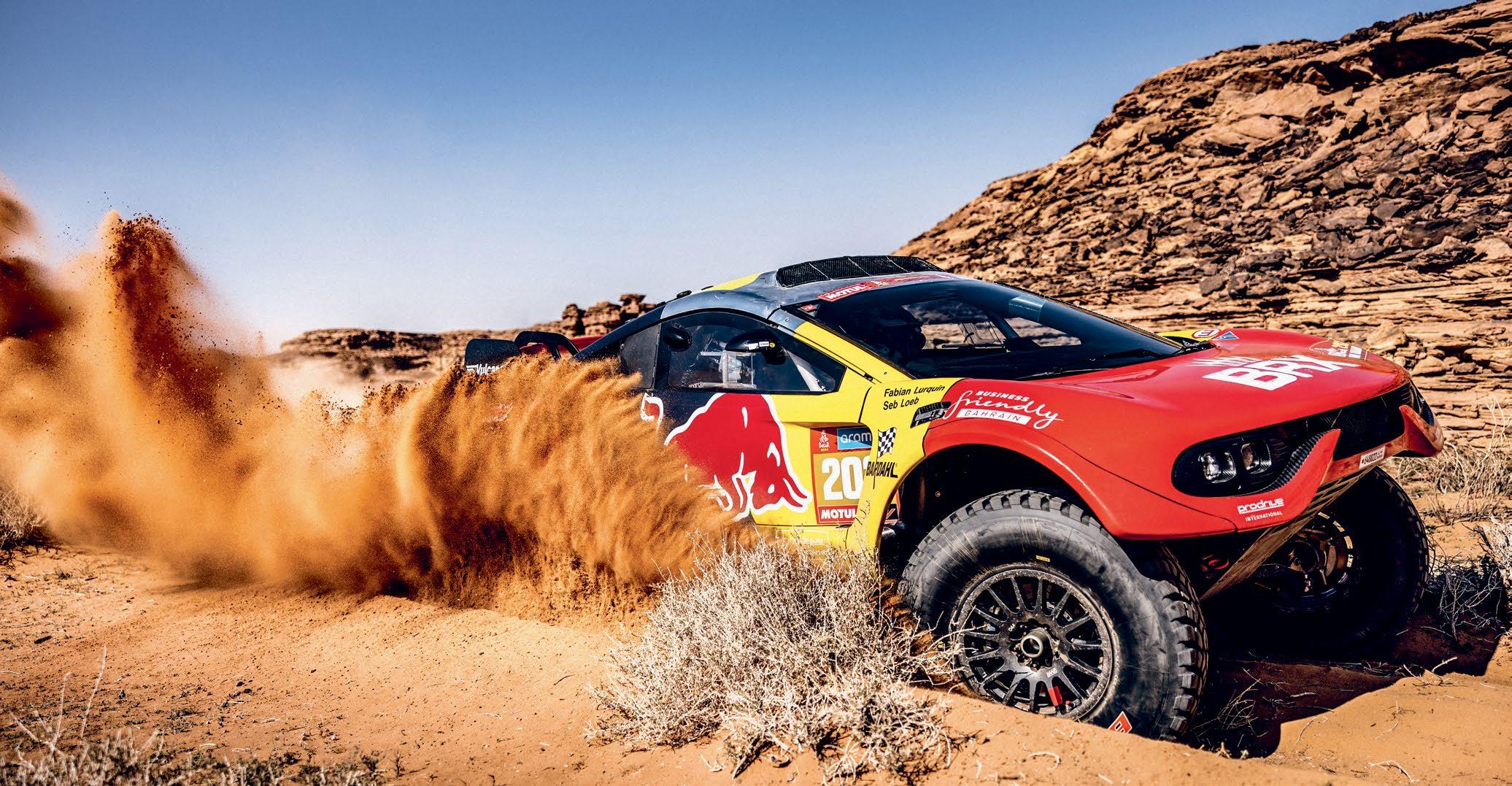
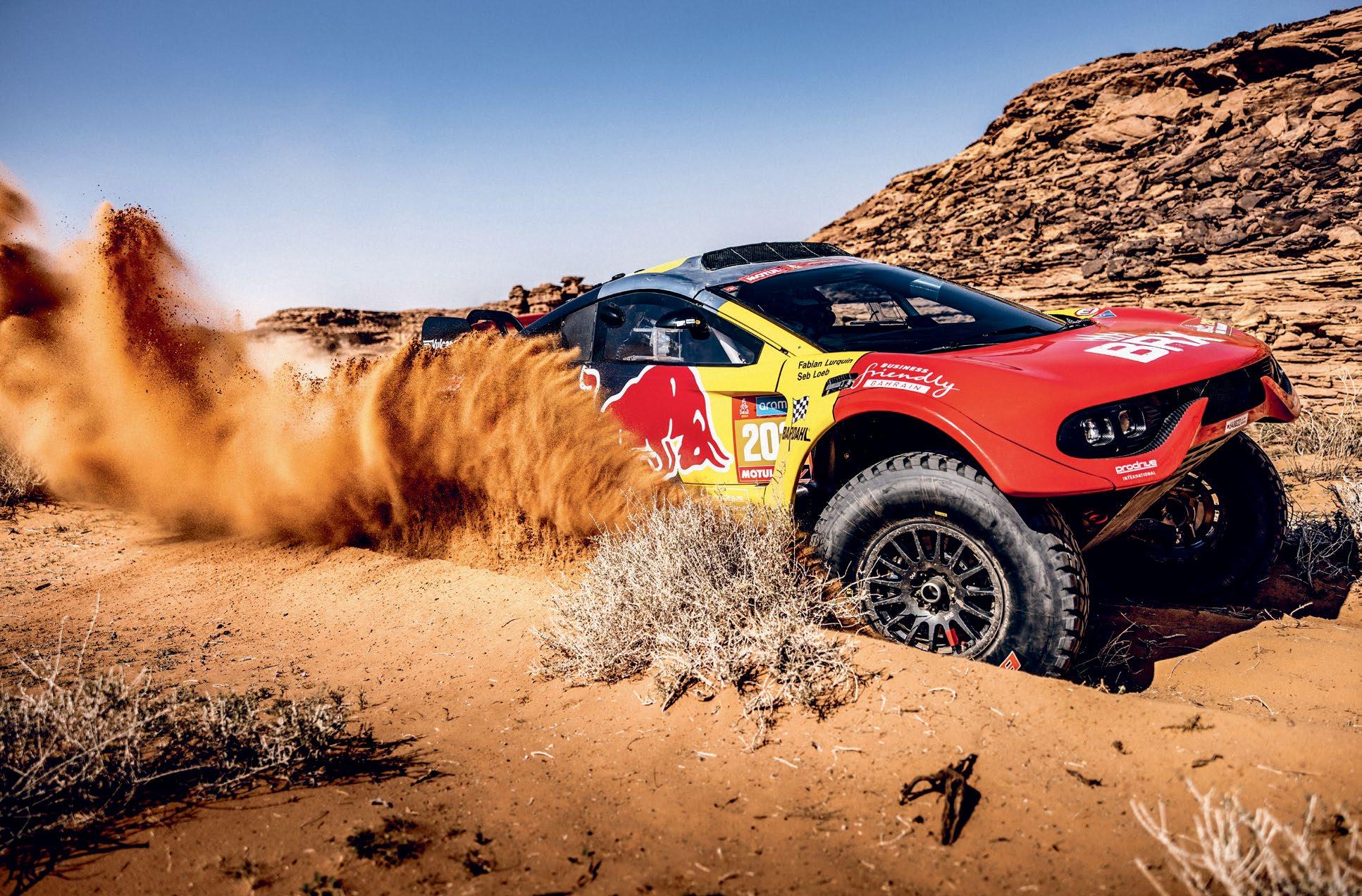
To design, build and run a car that can take on the punishments of the world’s harshest terrain, day in, day out is a vast undertaking for any team, no matter which of the four classes available for cars at the Dakar we’re talking about. The Ultimate class really is that, with the leading vehicles heading the charge, followed by Stock, Challenger prototype SSVs, and SSV production, while the Truck class is run with 10-ton behemoths that seem to defy physics when at full speed. The forces that the Ultimate cars can now take when at 170 km/h are from another world with many of the fi ttest and most experienced drivers saying the weakest part of the car is now…the human body sat behind the wheel. Even with 350 mm of suspension travel and wheels with a 940 mm (37”) diameter that can take the pounding of huge rocks at top speed, it’s the car’s crew that must endure the daily battering. Coupled
with the heat still in the high 40s inside the car with air conditioning working overtime, the drivers arrive at the evening bivouac dripping from the collar of their overalls to their socks; nothing is dry after the copious amount of sweat they’ve pumped out. Sheer force is another factor as well, when the wheels land in ruts and the sump guard fl at lands onto the ground, there can be a 14 g loading on the car. As Sébastien Loeb (Bahrain Raid Xtreme) says, “You need to be fi t for these rallies with strong muscles in the neck as sometimes it really is very hard indeed on the landing.”
But all of this is hardly surprising as there are more kilometres in a single day of Dakar than the whole of a World Rally Championship event. Even recently, at Dakar 2023, there was a day when 861 km needed to be covered in a day, including the 333 km stage.



Can you imagine what that was like for the bikers?! And then there is the Empty Quarter in the South East of Saudi Arabia, a place that really is just that and has to be seen to be believed. It’s dunes, dunes and more dunes covering the UAE, Saudi Arabia and Oman but for a European that means nothing. What does register inside a European’s mind is that the Empty Quarter is of a size similar to that of France.
So what exactly is needed to attack these stages on a daily basis for two whole weeks to get double points on the Dakar that’s part of the fi ve round World Rally-Raid Championship? Prodrive are the most recent manufacturer to enter the huge - literallyworld of Rally-Raid with the Hunter that has been designed and built at its headquarters in Banbury, in the UK. Indeed, its fi rst rally with the car was the 2021 Dakar with testing only as a run up to the event, but from there followed stage wins in 2022 and an incredible nine wins from fourteen stages in 2023 in the Ultimate class car, where Toyota, Audi, Ford and, soon Dacia, compete.
With Sébastien Loeb and, as of Dakar 2024, Nasser Al-Attiyah behind the wheel of the Prodrive Hunter, having two titans of international motorsport has been a massive boost to the team. Underneath the swooping carbon fi bre lines, the Hunter is a 3.5-litre twin-turbo powered, permanent 4WD beast that is at its best going fl at out over the tracks of Ha’il in the north of Saudi or the massive Erg Chebbi in the east of Morocco. It has a fuel tank that’s nearly 500 litres in size, enough to accommodate two medium sized people, 298 kW (400 bhp) and 700 Nm of torque, six sequential gears and the ability to do anything you want as well as can be done out in the desert.
However, there’s one part of Rally-Raid that people never see and that’s the preparation. For Dakar 2023, the cars left Prodrive on November 26, 2022, going fi rst to Marseille to be loaded on the ship that took everything to Saudi Arabia. After the rally fi nished in the west of the country, the cars and service trucks drove 1,600 km across to Dubai for the next rally, the Abu Dhabi Desert Challenge in February. After that event, they boarded a ship in Dubai, passed through the Suez Canal into the Mediterranean, crossed the Atlantic, Panama Canal, and the Pacifi c before ending up in Los Angeles.
Everything was then driven fi rst to Phoenix and then across the border to the Sonora Rally in Mexico in late April. After the rally, it was back to LA, through the Panama Canal and across the Atlantic again, returning to the UK in June, some seven months after they left. It’s a gargantuan operation that requires full time monitoring.
The drivers
Dakar 2024 was different for the Prodrive Hunter as Nasser Al-Attiyah arrived at the team as the reigning World Rally-Raid Champion carrying with him the expectation of many to take his sixth Dakar win with, following Volkswagen, MINI and Toyota, his fourth manufacturer.
Fortunately, this year’s Dakar was dry which helped matters no end for the service crews, allowing them to work in the dry and warm weather rather than the wet and cold. The start at AlUla moreover provided the ideal location to get the rally going on the right foot, but there was no time to look at the magnifi cent landscapes.
Heading down towards the south east and the Empty Quarter, Loeb and Al-Attiyah upped their pace, winning three out of six stages with drama, speed and sheer bravado from Al-Attiyah on stage three when, suffering a puncture, he opted to drive the last 30 km on a fl at tyre rather than stop and lose time changing it. It was spectacular stuff as he hit 137 km/h along dusty tracks with nothing left on the rim, before a two-hour service right at the fi nish line. It was one of the highlights of the event.
Loeb then went on to take victory on the new 48-hour Chrono stage, a whopping 766 km with 532 km on the biggest and ‘worst’ of the dunes in the Empty Quarter, which had the drivers sleep out in the desert in the most basic of bivouacs around a camp fi re. A scenario that was certainly very reminiscent of the old days in Africa. Loeb also won three of the remaining six stages in the second week, but was cruelly robbed of time due to punctures and a huge hidden rock, which even the toughest suspension on the Hunter was unable to withstand, crossing the fi nishing line in Yanbu as third overall.
In total between Loeb and Al-Attiyah, the Hunter won six stages in what was its fi nal factory entry before the Prodrive team moves on to prepare the Dacia Sandrider, targeting the Dakar in 2025, ’26 and ’27.

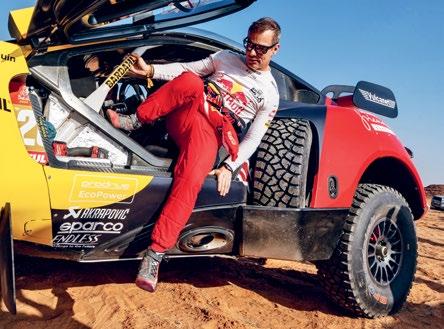

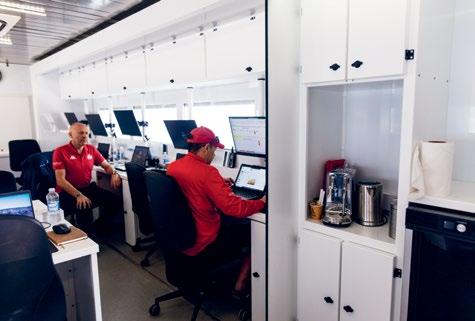
Many of the fittest and most experienced drivers saying the weakest part of the car is now…the human body sat behind the wheel.


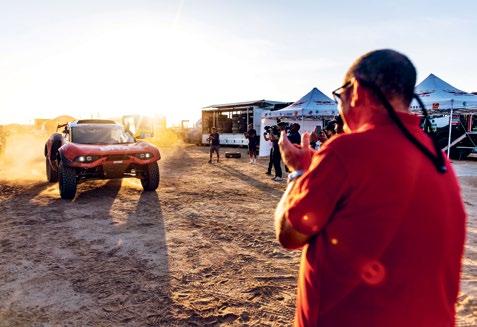


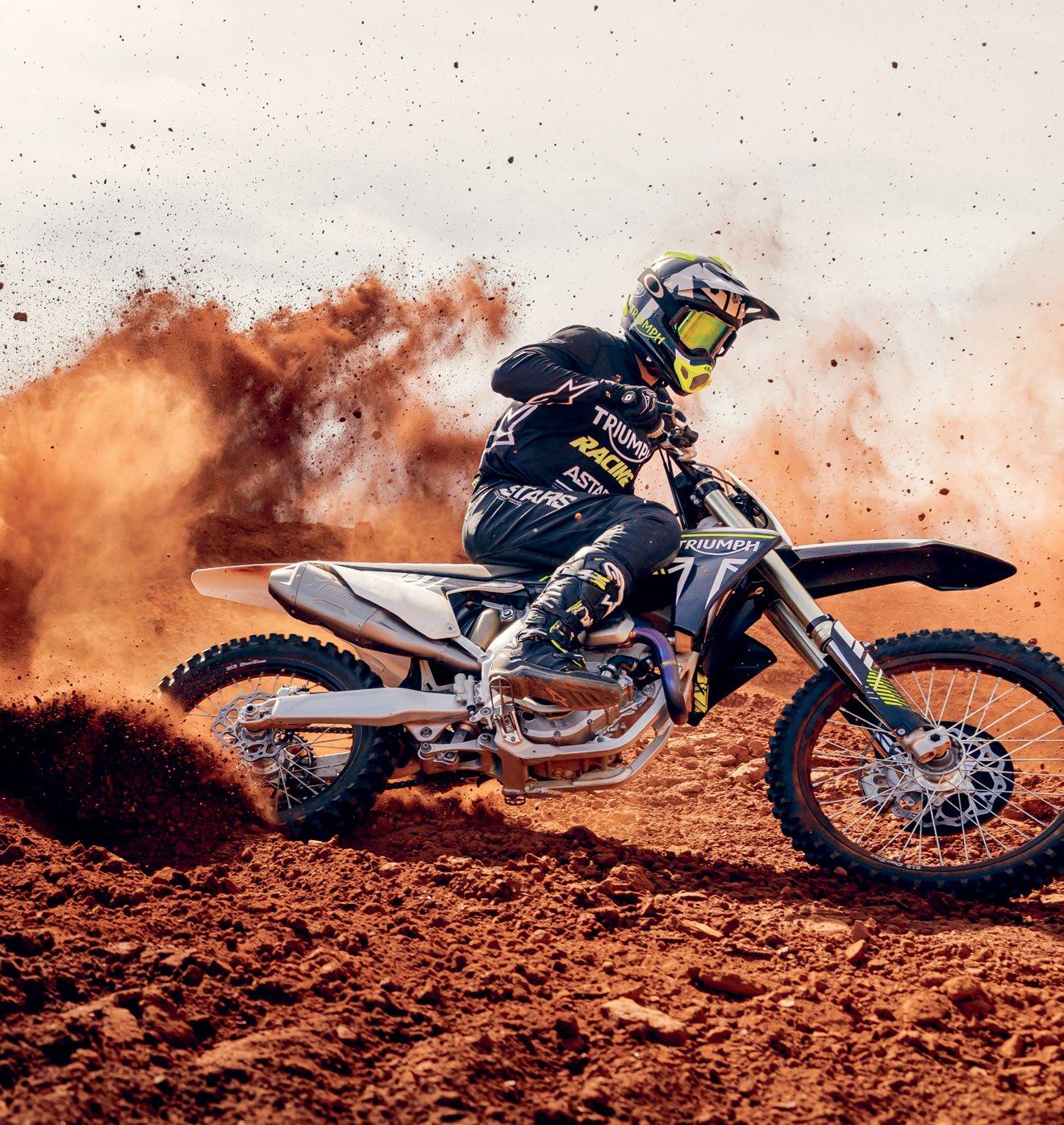
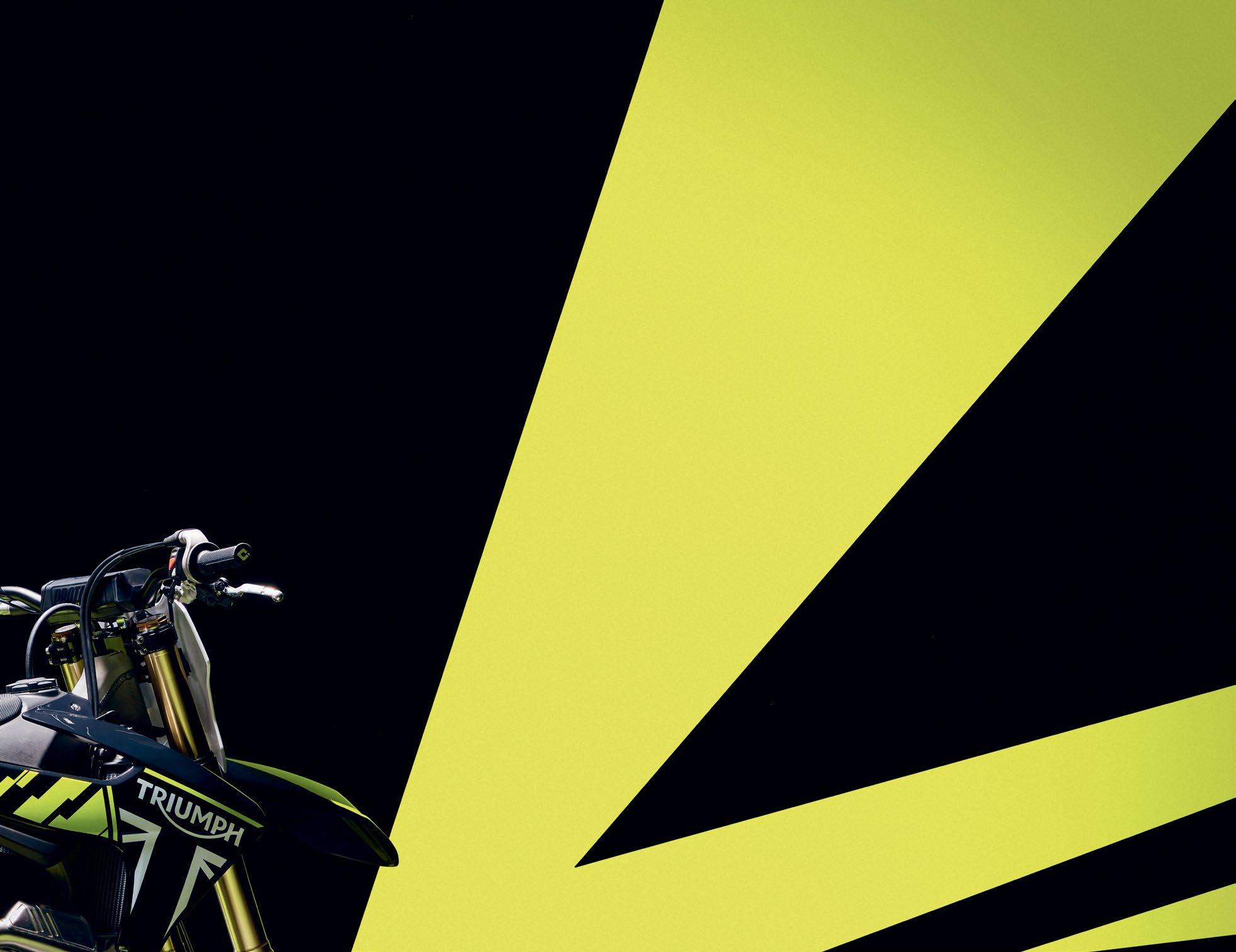



A large factory on the outskirts of a town with 34,000 inhabitants can certainly have a major economic impact. Triumph provides bread and butter to many who have been migrating to Hinckley from all over the UK and abroad. One such individual is Head of Off-Road Programmes Ian Kimber, who grew up in distant Wales, but has lived in Hinckley and worked for Triumph for two decades. “20 years at the same place sounds like a lot today, but it is nothing unusual for Triumph,” says Kimber, who started at Triumph Motorcycles in 2003, working on the Bonneville chassis design team. Bonneville is one of the brand’s most iconic models. The fi rst series, launched in 1959, was named after the famous Bonneville Salt Flats in Utah, USA, where Triumph and others attempted to break motorcycle speed records. As an aside, Triumph’s in-factory museum houses a Triumph Infor Rocket Streamliner, a rocket on wheels with two turbocharged engines from the Rocket III model fuelled by methanol and outputting more than 750 kW (1,000 hp). Unfortunately, the salt at Bonneville is too wet and too soft, so the 400 mph magic number remains elusive.
An off-road stalwart
Soft surfaces are not exactly new for Triumph. Off-road driving and off-road racing were different in the past. One way was to attach suspension with longer travel and wheels with all-terrain tyres to a road bike, which resulted in the popular ‘off-road’ scramblers. Triumph is also well known for its initially smaller, but then – in line with the trends – increasingly larger adventure motorcycles from the ‘Tiger’ series. The fi rst, the Tiger 80, dates back to 1937, with the modern age beginning with the Tiger 955i in 2001. The Tiger 800 kicked up a lot of dust in 2010, both fi guratively and literally, with its three-cylinder engine proudly announcing its arrival into worldwide adventure travel on two wheels. It was joined two years later by a larger 1,200 cc brother, the Tiger Explorer, proving that the threecylinder unit works well with both road and moderate off-road riding. It was on a Tiger 1200 GT Explorer that Iván Cervantes set the record for riding the greatest distance in 24 hours in 2023 – 4,012 kilometres. On
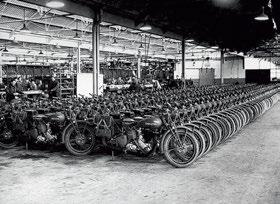

road, of course. Tigers currently account for about 22 % of all Triumphs built. But entering the world of off-road racing, such as the FIM Motocross World Championship and the USA’s SuperMotocross series, is something else entirely. Triumph faces stiff competition there, with racers who are no longer just off-road enthusiasts who push their bike onto a van for a weekend race, but top athletes with a small army of staff, a tow truck full of special spare parts, top-of-the-line tools, and master mechanics. And yet, the basis is still a mass-produced motocross bike, the same requirement as for WorldSBK, a basis that must be solid for both amateur racers and professionals who touch elbows with the world’s best motocross riders on the starting line. Triumph lacked this experience. So how do you tackle such a project when all you’ve got in front of you is a blank sheet?
A successful start
You get the right people fi rst. Two greats of the sport, former American professional motocross rider Ricky Carmichael with fi fteen championship titles in motocross and a further fi ve in supercross, and Spaniard Iván Cervantes, four-time outdoor and one-time


indoor champion in enduro, and also fi ve-time Spanish MX champion, have been involved since the beginning. Enduro!? “Can we talk about enduro?” I ask Ian. “Yes, you can write about enduro, we’re not hiding that we’re entering enduro. We’ve just unveiled a 250 cc motocross bike, a 450 cc model is scheduled for later this year, and then you can expect enduro products.” “Will you then compete in enduro in 2025?” “I can’t talk about that just yet. But it’ll happen very soon,” laughs Ian. “And rally?” “Um, rally is interesting, but not easy. We have an idea of how much others have invested in the sport, and since Triumph is privately owned, we treat the money that goes through the company, as our own. We make sure we’re spending it in the best ways. It’s currently best for us to maximise what we’re doing in motocross, supercross and enduro.”
It seems like the company really went all in regarding motocross. I visited the factory in the week before the fi rst World Championship

 Ricky Carmichael
David Essex
Ricky Carmichael
David Essex


race in Argentina, where Mikkel Haarup made history with Triumph’s fi rst-ever podium fi nish in the MX2 World Championship. This probably made the eyes of many in the paddock pop out. Jalek Swoll, riding in the 250SX East Region of the AMA Supercross Championship, was at the time of writing sitting in 10 th place overall. He’s already fi nished in 6th twice. “The ultimate goal is obviously winning, but having riders in the top ten has exceeded our expectations for our fi rst year of racing, and it shows the capability of the bike.”
Doing it better
I know, perhaps a ridiculous question, but I couldn’t resist. “Triumph is known for its traditional two- and three-cylinder engines. But the only option for motocross is a single-cylinder engine, right?” “Absolutely. We’re the new kids on the block. It’s important not to try and reinvent the wheel. People have tried it before and it didn’t work. We’ve learnt from their experience, we


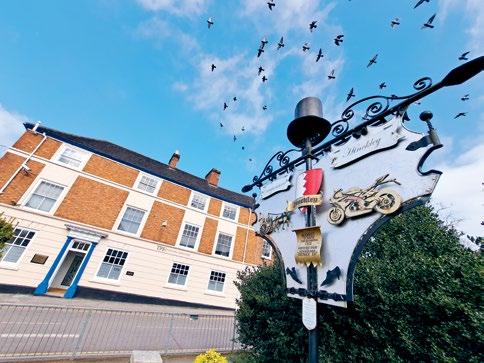
Mikkel Haarup made history with a podium finish at Triumph’s very first appearance in the MX2 World Championship.

looked at what everyone else was doing so as to see if we can improve,” says Ian. Seen at a glance from afar, the new TF 250-X could also be blue, red or orange. But when you see the bike from up close, it clearly couldn’t be any of the above. This black and white bike features some spicy –modern and loud – fluorescent yellow. Triumph claims that their motocross model differs from the competition. “The chassis is key for us. Our aluminium spine frame, as opposed to a perimeter frame as the Japanese brands use, is like a combination of the steel frame used by European brands, plus the aluminium that you see on Japanese bikes. It gives us unique stiffness and flex characteristics, the bike is very neutral when steering, but also very responsive. The chassis is very dynamic. We’re striving hard to achieve light weight and responsiveness, not only of the sprung, but also the unsprung mass. And power, we’ve got the best-in-class power.” “Really?” “Yes, it’s been measured, we’re confident it’s true and announced it to the press last week.”
When choosing partners for accessories, Triumph unsurprisingly opted for time-tested, high-quality products, such as Brembo brakes and hydraulic clutches, KYB suspension, ProTaper handlebars... And, of course, the right partner for the exhaust system. “The exhaust partnership has elevated what we can offer as an aftermarket system. Obviously, our bike comes out of the factory with a full race system. But the ability to use more exotic materials, to be more selective with the pipes one can use means we can offer customers a real benefi t. They can go out of the factory and run on the standard map, no problem. But we also have a wi-fi module for downloading specifi c Akrapovič maps. Those maps give a real-world increase from 8,500 rpm all the way up, they provide a good power lift.” And how do the established teams look at Triumph? Are they pleased with the newly-arrived competitor? “They say they are,” says Ian. Yes, competition is welcome and




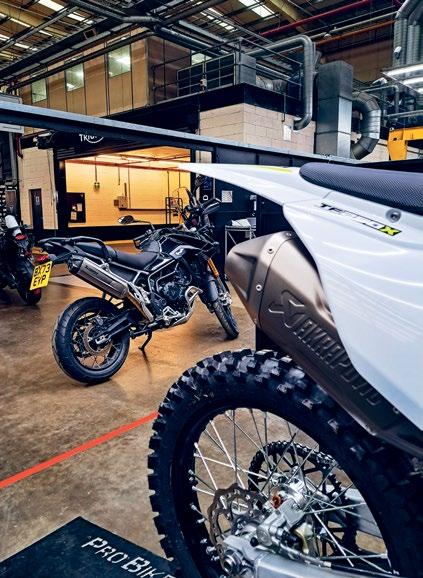
“It’s important not to try and reinvent the wheel. People have tried it before and it didn’t work. We’ve learnt from their experience, we looked at what everyone else was doing so as to see if we can improve.”
Ian Kimber, Head of Off-Road Programmes at Triumph Motorcycles Limited
raises the level of the sport, but it eventually also redistributes the sponsorship money and bike sales. Triumph thinks that entering the new segment could increase their potential market and bring in new, different customers – young, dynamic, fi nancially stable individuals who will remain loyal to the brand. With prices just under £10,000, they are positioned reasonably and expectedly.
The way the Hinckley factory receives its visitors is quite exciting. The complex is, of course, guarded and monitored, but a part of the huge building, the Triumph Factory Visitor Experience, is open to everyone. One section showcases motorcycles from the fi rst Triumph Model No. 1 from 1902, which was basically a bicycle with a bolt-on engine, to the new Street Triple with its Moto2 engine. I haven’t ridden it yet, but Ian believes that if I liked the previous two Street Triples, I’ll fall in love with this one. From the museum part of the Visitor Experience Centre you then climb the stairs through the factory’s warehouse to
the fi rst fl oor, where some bikes are shown completely disassembled and others as during development with clay parts, 3D printed pieces and fully adjustable key elements such as frame geometry and pedal position. Also on display are some exceptional conversions, single- and limited-quantity serial-production ones, which sell out soon after launch. Then there is the obligatory shop with motorcycle equipment and souvenirs alongside a stylish bar with engines instead of paintings on its walls. On that day, at the beginning of March, the temperature gauge in my rented Volkswagen showed 7 °C, and yet there was not a table free during lunchtime; motorcycles from very different brands congested the parking lot. Most were, obviously, Triumphs, perhaps even some from the Tiger 900 range, unveiled in October 2023, where customers can choose an Akrapovič exhaust when ordering the new 900 GT, GT Pro or Rally Pro versions. If you’re ever in the vicinity, also visit the National Motorcycle Museum, Britain’s largest motorcycle museum, located

next door to Birmingham Airport. It houses about 900 motorcycles, with, naturally, a huge number of Triumphs, alongside many other brands that you may not have heard of, but which co-wrote the extraordinary history of British and world motorcycling. Let me just quickly mention the 1969 Triumph Thruxton Bonneville racer, the fi rst production bike to exceed an average speed of 100 mph in the Isle of Man race, or the Triumph works 750 cc production racer, an outstanding example from 1970, the only motorcycle with which racers on the Isle of Man recorded fi ve consecutive victories in the 1970s. Its nickname is ‘Slippery Sam’.
The visit is defi nitely worth its price after fi nishing lunch at the Triumph bar. Should we go for another lap of the Triumph Factory Visitor Experience?

 Triumph Daytona 955i
Triumph Daytona 955i
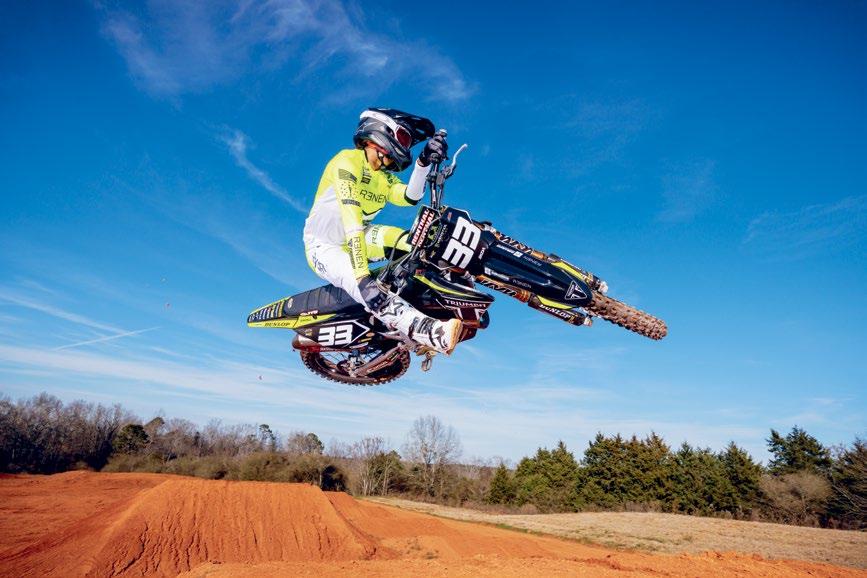




BOGATA ZGODOVINA, SVETLA PRIHODNOST
Na obrobju Hinckleyja, angleškega mesteca s 34 tisoč prebivalci, stoji ogromna tovarna Triumph Motorcycles, ki predstavlja pomembno gospodarsko dejavnost. Matevža Hribarja je na obisk tovarne zaneslo sveže partnerstvo med Akrapovičem in Triumphom, ki je povezano z vstopom legendarne britanske znamke v svet sodobnega terenskega motošporta. V tovarni ga je sprejel Ian Kimber, vodja razvoja terenskih programov pri Triumph Motorcycles. Mehka podlaga za Triumph ni čisto nova. Zelo dobro znan mu je tudi svet potovalnih enduro motociklov; svoje so poimenovali Tiger. Prvega Tigra z oznako 80 so izdelali leta 1937, moderna doba pa se je začela z modelom Tiger 955i leta 2001. Nekaj povsem drugega je svet terenskega dirkanja, kot sta svetovno prvenstvo v motokrosu in superkros serija v ZDA. Triumph se spogleduje tudi z endurom. Pri dodatni opremi so se Britanci odločili za zavore in hidravlično sklopko Brembo, vzmetenje KYB, krmilo ProTaper in izpušni sistem Akrapovič. »Partnerstvo z Akrapovičem je razširilo našo poprodajno ponudbo. Možnost uporabe bolj eksotičnih materialov in drugačnih cevi pomeni, da nudimo resnično prednost našim strankam,« pravi Ian Kimber. Če se znajdete blizu Triumpha, si je vsekakor vredno ogledati tudi britanski muzej motociklizma blizu birminghamskega letališča, kjer se bohoti še nekaj zanimivih Triumphov iz njihove bogate zgodovine.
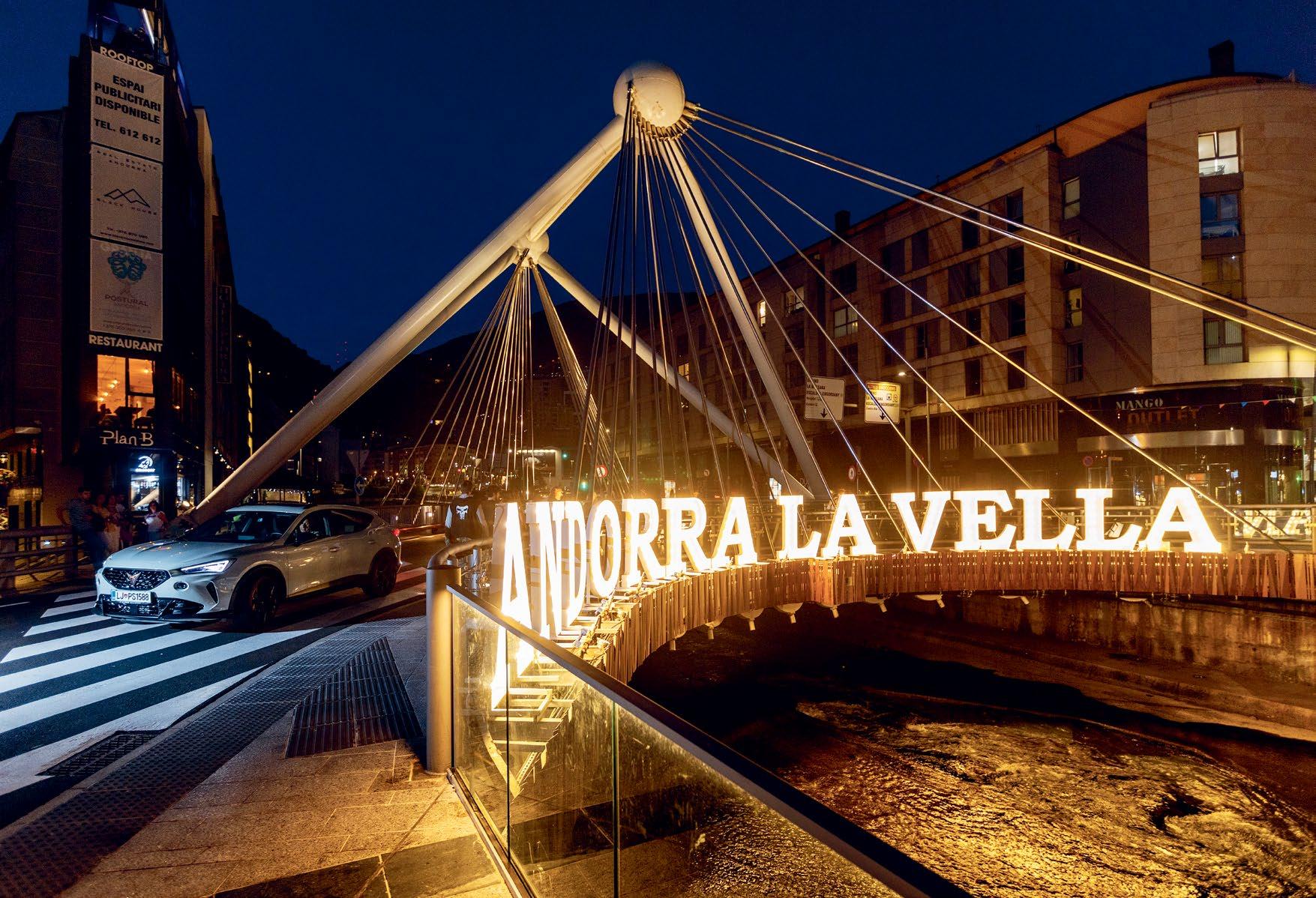
Cyril Despres, Joan Mir, Jorge Martín, Aleix and Pol Espargaró, Álex Rins, Luc Alphand, Marc Márquez, Jorge Lorenzo, as well as opera singer Montserrat Caballé, tennis player Arantxa Sánchez Vicario, and Barcelona footballers such as Gerard Piqué used to or still live in Andorra.

A territory with two foreign rulers while being an independent and internationally recognised country? Welcome to probably the most unusual political entity in Europe – the Principality of Andorra, a centuries old state in the Pyrenees, where poverty and emigration used to be widespread. The cars manufactured closest to Europe’s sixth smallest state are produced in the suburbs of Barcelona and carry the Seat or Cupra brands. It thus felt the most appropriate to discover Andorra in a Cupra Formentor VZ5 equipped with an Akrapovič exhaust.
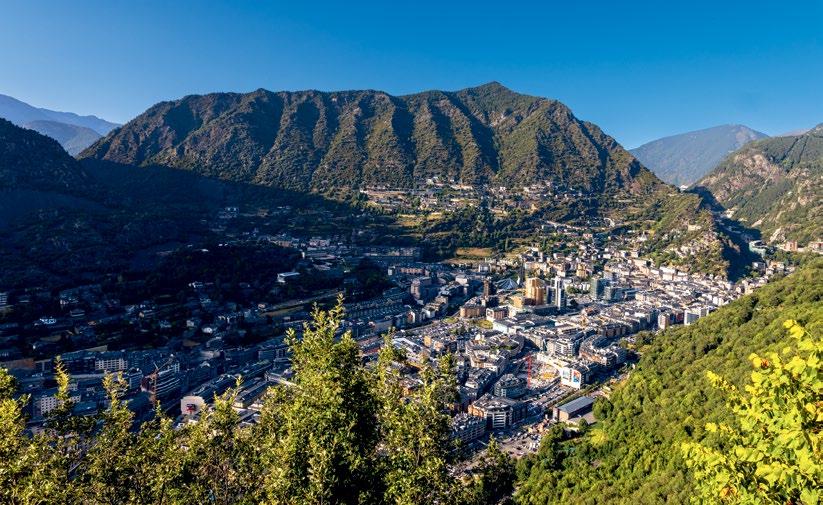

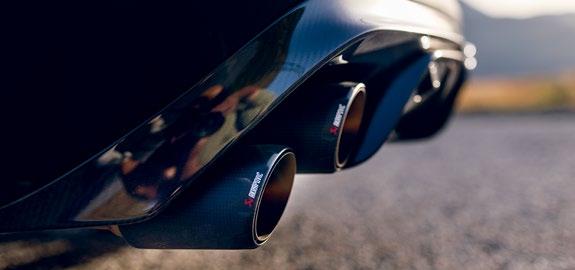

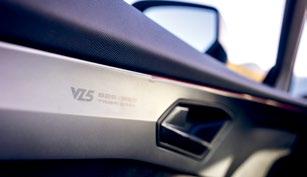

But Andorra is not only home to ski resorts, full in the winter, and dutyfree shops, full all year round and also sometimes causing very thorough baggage checks when leaving for Spain or France. The country is full of compelling natural and cultural sights as well.
Andorra la Vella
Although the midweek summer evening was warm and the sky clear and full of stars, the road winding its way up the Pyrenees out of the last major French town of Ax-les-Thermes was becoming increasingly empty. We met the occasional car and the French border post was lit, though closed and vacated. We entered the valley of the Valira d’Orient river from the border town of El Pas de la Casa through the recentlybuilt tunnel – an easier route than crossing the 2,400-metre Envalira Pass which was necessary not so long ago. The first larger settlement one encounters in Andorra’s eastern part is Soldeu. The parking lots and the hotel’s car park were full, but the town itself looked deserted at 10 p.m., though we still managed to get a beer at the reception desk of the Naudi Hotel. “Traffic will be chaotic tomorrow morning so you should plan your day accordingly,” the receptionist warned us before we hit the sack, but we didn’t really believe her, considering our experience on the road this evening.
Andorra is tiny. It measures 468 km2, and has a population of just under 80,000 people, the vast majority of whom are foreigners working or
living there. Having been settled at least since the times of the Romans, the area was ruled and co-ruled by feudal overlords, local clergy and monarchs before becoming the still existing co-principate in the 19th century. The Principality of Andorra is a dual protectorate, overseen by the Republic of France and its president, and the Kingdom of Spain, on whose behalf it is ruled by the bishop of Urgell. The two foreign sovereigns ruled this small piece of land in the Pyrenees absolutely until 1993 when Andorra adopted a new constitution that instituted a parliamentary monarchy with a sovereign government, ministers and a de facto self-government. That is when Andorra also became a member of the United Nations and the Council of Europe. The two foreign co-princes come to Andorra increasingly rarely; the bishop of Urgell mainly for church matters, and the French president only before the French presidential elections.
Autograph hunters’ paradise
I remember my first trips to Andorra in the 1980s and 90s when shop windows at every turn featured photos of the then bishop and president, with all the prices simultaneously
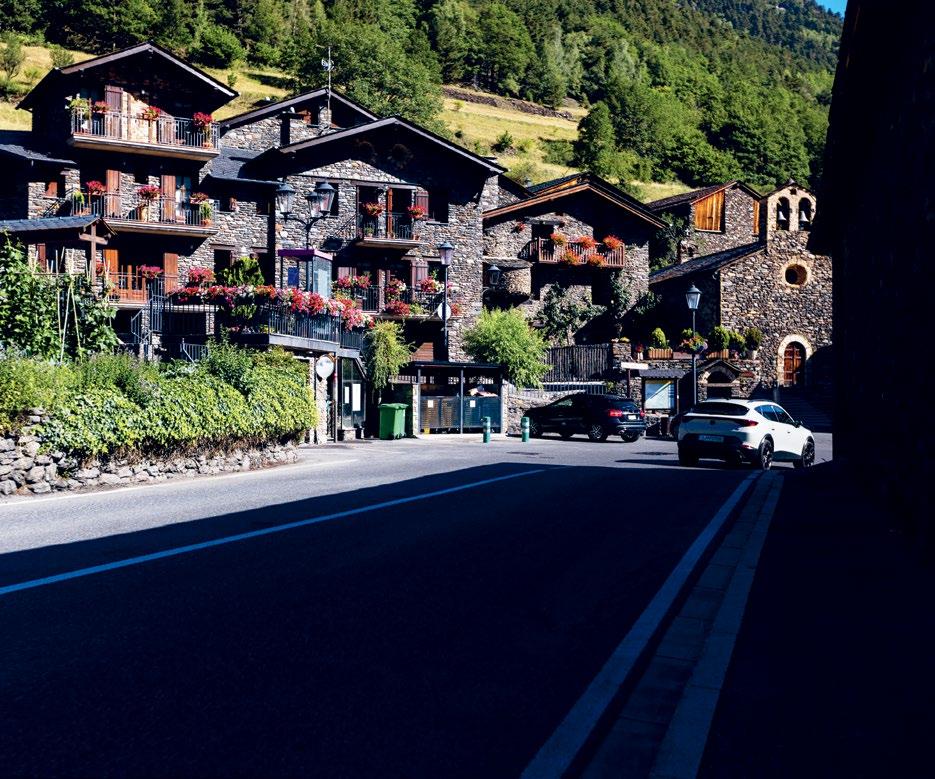
The biggest issue is finding the balance between sustainability and growth. We are trying to find this balance, we recently adopted a new urban plan in Canillo that severely limits new construction.
Francesc Oriol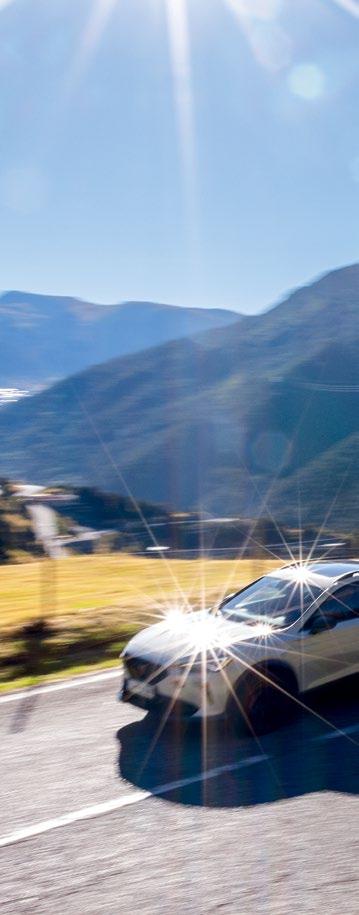
me that he had the best price of petrol in all of Andorra. Well, a few turns later we were able to ascertain that petrol costs almost the same everywhere, so we decided to fill up our car at his pump. Ah yes, the car. Our Cupra VZ5 produces 294 kW (400 hp) from Audi’s five-cylinder engine and, with Akrapovič’s help, the German engine in the Catalan car sang out in the narrow valleys and echoed beneath the mighty Pyrenees boulders. I found out something else as well. Andorra has not only changed politically, but also visually in these past 30 years. Large settlements have sprung up along
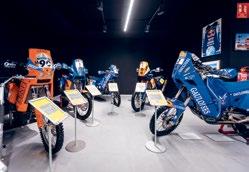
the main road. Its capital, Andorra la Vella, now has high-rise buildings, with settlements and towns spreading far into the valleys towards the mighty peaks of the Pyrenees. We met for a coffee with Francesc Oriol, who is in charge of tourism and culture in the town of Canillo. He explained that his job is public and technical and that he is not a politician. However, the consul or mayor of the municipality Francesc Camp is, and comes from the centre-right Democratica Andina party. “Andorra has for a long time needed some kind of protection, which is why we clung to the protectorate of France and Spain for so long,” Oriol began the conversation. “Now the Democratica Andina party is advocating joining the European Union, of course with special exceptions given our small size.” Francesc also told us that only 18,000 of the 80,000 Andorran inhabitants are actual Andorran citizens, with foreigners comprising the rest. “It is a unique mixture of people from all over, which requires very good relations between everyone. There is enough work, the wages are good and all this reduces the potential for dissatisfaction, but the cost of living in Andorra is also high,” the head of tourism and culture in the town of Canillo continued optimistically. He also pointed out a problem that I have already noticed: “The



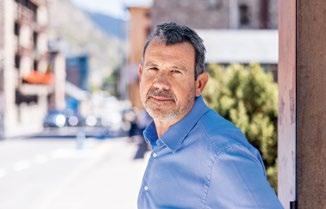
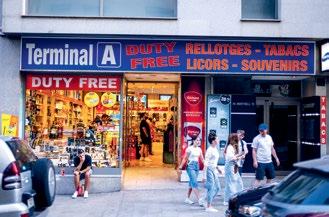
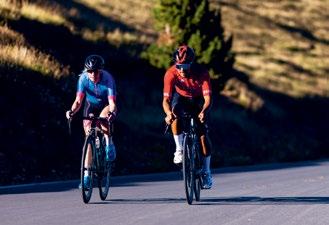


biggest issue is finding the balance between sustainability and growth. We are trying to find this balance, we recently adopted a new urban plan in Canillo that severely limits new construction. This will be the most difficult action to carry out in the near future, but we are aware that we have no other option,” added Oriol, before emphasising that national pride rides high and that we should not call anyone here Catalan or French. We also learned that Andorra has a very diversified education system, as a total of four parallel school systems coexist in the pocket state - Andorran, Spanish and French, alongside private and church schools. Public schools are free, university studies are available, but the main industry is, of course, tourism with almost 10 million visitors per year.
Elisabeth Perez is in charge of marketing at the Hotel Naudi Boutique, which clearly reflects the strong growth of tourism in the principality. The hotel, located on the south side of the main road through Soldeu opposite a pizza restaurant, has been completely renovated. It grew out of a small dwelling, where its story began three generations ago. Elisabeth has married into the Naudi family, which has been managing the hotel since 1964 when Grandma Rosa opened a small restaurant with simple rooms to sleep in, as the road over the pass to France was often closed in
winter due to snow. The hotel slowly grew, with successors Michel and Romana Naudi building a new and bigger building which Marc Naudi and Elisabeth Perez renovated in 2018, as well as starting a new concept of a boutique hotel for adults only with a restaurant known far and wide for its local dishes. “The champagne we serve for breakfast is a very special experience, as it comes from the oldest champagne grower in Reims. The vast majority of our guests come from Spain and France, but occasionally people also arrive from farther away, just like you,” Elisabeth Perez smiled at the end of the chat. The hotel’s lounge windows offer a view of the finish area of the Skiing World Cup ski runs. The country is now home to more than 200 kilometres of ski slopes, a length greater than that of its main roads and these transformed the principality into a very attractive tourist destination during the winter as well.
Culture meets nature
But Andorra is not only home to ski resorts, full in the winter, and duty-free shops, full all year round and also sometimes causing very thorough baggage checks when leaving for Spain or France. The country is also bursting at the seams with compelling natural and cultural attractions. If you arrive by car, do not miss a trip to the top of Andorra in Port de Cabus, which offers amazing views of the country and the
We often found the roads empty and were accordingly able to fully let all those 294 kW (400 hp) loose with the sharp notes resonating from the four Akrapovic exhaust pipes.
Pyrenees, followed by a stop at the roadside church of Sant Joan de Caselles with perfectly preserved frescoes, with similar ones also found in the slightly more remote church of Sant Miquel d’Engolasters. But even more than culture and history, nature beckons here. This is an unspoiled paradise for hikers, walkers, mountaineers and adventurers who appreciate the pleasures of nature, as Andorra still contains a lot of completely untouched valleys with pastures and meadows that can only be reached on foot. We did not have enough time for such adventures, and having driven here in a powerful Spanish bull in the shape of a Cupra Formentor VZ5, we preferred to drive to all the remote valleys and peaks that could be reached by a paved road in the few days we had available. And here, far from Andorra’s tourist magnets, we often found the roads empty and were accordingly able to fully let all those 294 kW (400 hp) loose with the sharp notes resonating from the four Akrapovič exhaust pipes.
We left Andorra in the morning, also in the middle of the week, and it was completely different than when arriving. We were bogged down in traffic jams, only moving slowly through the valley and finally began to believe the story of 10 million tourists a year.

Image this: you embark on a luxurious private jet which takes you on a 24-day globe-trotting expedition featuring 10 UNESCO World Heritage Sites – from Easter Island to the Taj Mahal and the Serengeti. You will be accompanied by a team of experts who will share their groundbreaking research in marine biology, anthropology, archaeology and palaeontology as well as bring each destination to life. Gain insight into local cultures as you meet a master Andean weaver in Peru and encounter members of a local Bedouin community in Jordan. Stay at world-class accommodations with options that include two spectacular lodges, one in the hills of Bhutan and one in the heart of Tanzania’s Ngorongoro Crater. The only other requirement is that you have €92,500 ($100,000). The next voyage departs in October 2024.
nationalgeographic.com/expeditions
Experience the thrill of abandoned mine tunnels under Mt. Peca near Črna na Koroškem, Slovenia. Embark on a kayaking adventure 700 metres below the earth’s surface and paddle through the flooded tunnels of the largest lead and zinc mine in this part of Europe. Enter a maze of subterranean tunnels and lakes that used to be a worksite full of men and machines. Unveil all the secrets of the abandoned mine in the company of a guide, a former miner. Become a part of the 350-year history of the mine during which thousands of kilometres of tunnels were dug and an impressive 19 million tonnes of ore were excavated.
podzemljepece.com
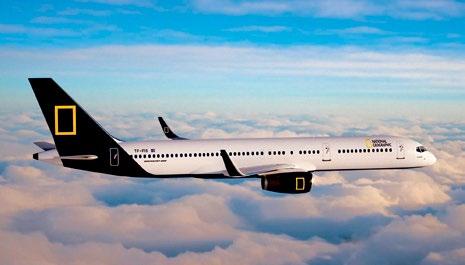
The 60th edition of the Venice Biennale, the world’s most prestigious and oldest-running art biennial, is set to run between April and November at the Giardini and Arsenale venues. The 2024 theme, Foreigners Everywhere, curated by Adriano Pedrosa, will put the spotlight on artists who are foreigners, immigrants or exiles, particularly those traversing between the Global South and North. Details of the 2024 edition have already started to trickle out, including first-time participants Benin, Ethiopia, Tanzania and Timor Leste, while Nicaragua, Republic of Panama and Senegal will for the first time set up their own pavilions. Australia will meanwhile be represented by First Nation artist Archie Moore.
labiennale.org
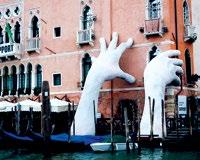

Need a break? How about a three-day fly-fishing adventure in three pristine Slovenian rivers with experienced local fishing guides? Travel from one fishing destination to another by helicopter and enjoy a bird’s-eye view of one of the greenest countries in the world. And don’t worry – even if you’re not an experienced angler, you’ll be given everything you need. Complete a triple challenge at three different fishing destinations by catching three indigenous fish species in three days: the grayling in the Kolpa River, the brown trout in the Krka River and the marble trout in the Soča River. All equipment, accommodation, culinary experiences and luxurious rides are taken care of. Now just cast your hook!
green-adventure.eu

 by Volker Hirth
photography Leica
by Volker Hirth
photography Leica
IT’S A JOURNEY INTO GERMANY’S INDUSTRIAL PAST. THE FACTORY BUILDING APPEARS AS IF OUT OF NOWHERE, BUT EVERYONE KNOWS IMMEDIATELY WHERE THEY ARE THANKS TO THE INSTANTLY RECOGNISABLE WHITE TYPEFACE INSIDE A RED DOT. LEICA. THE NAME IS AN ABBREVIATION OF LEITZ(SCHE) AND CAMERA. ‘KAMERA’ IN GERMAN, ACTUALLY, BUT THE FOUNDERS KNEW THAT IT NEEDED AN INTERNATIONAL RING TO IT TO MAKE IT WORK. THE GIANT METAL GLOBE AT THE CENTRE OF THE FINAL ROUNDABOUT BEFORE ENTERING THE COMPANY’S PREMISES ALSO FEATURES THE RED DOT WITH THE FAMILIAR NAME INSIDE – AND SO DOES OUR MEETING, BECAUSE THE SMALL LEICA DELEGATION ARRIVES ON THE DOT FOR THE TOUR OF THE COMPANY PREMISES. AFTER ALL, PUNCTUALITY GOES HAND IN HAND WITH PRECISION. BOTH ARE VERY GERMAN, AND PRECISION IS AS EVER-PRESENT AS THE FAMOUS RED LOGO WITH WHITE LETTERS THAT CAN BE SEEN ON EVERY CAMERA.
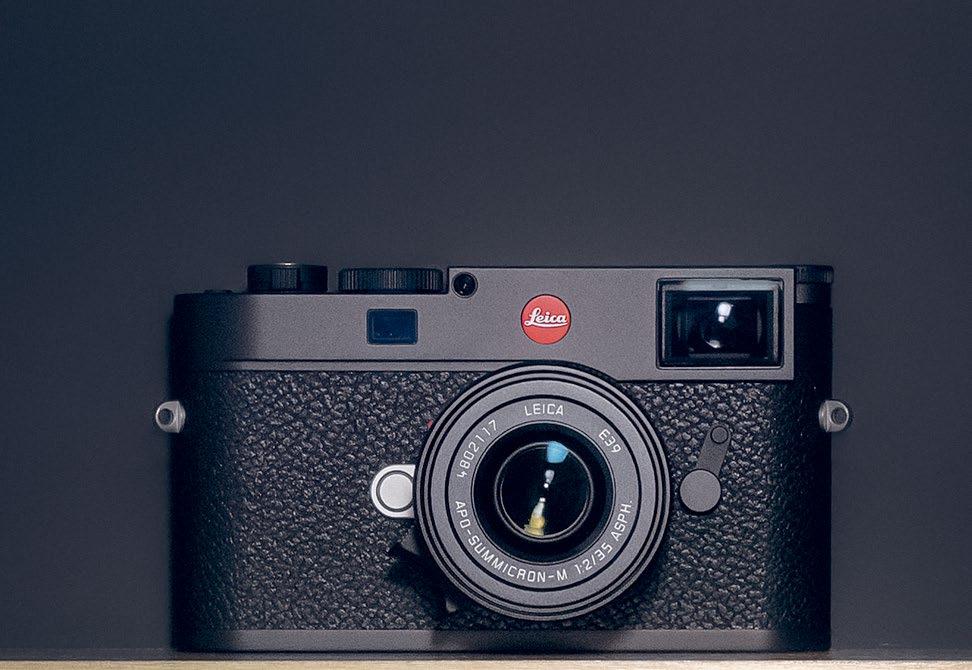






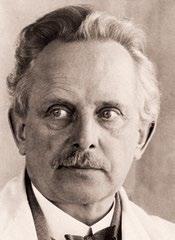

Even today, every Leica M-photographer must know how to take photographs.
Our group, comprised of a single guest, is considerably smaller than a Chinese tour group given a guided tour of the large and small treasures of the past and present by a knowledgeable Leica employee. It is noticeable that some of the Chinese are wearing a Leica. Just the body, without the lens. Leica as a fashion accessory. Like the little bag from Louis Vuitton or the little scarf from Hermès. If this assumption is correct, the guests from the Far East are more likely to belong to the artistic than the nouveau riche milieu. Albeit the wealthy one. Lifestyle for the well-to-do.
A Leica as a statement. As an expression of an attitude to life. What’s the point of a copy when you can have the original? If a bag, then Hermès. If a watch, then a Rolex, even if

quartz movements can do so much more. If a camera, then – of course – a Leica. Because with a Leica, every owner is also part of what is probably the most important development in the history of photography.
Photography’s early days were characterised by large boxes. The cameraman was sometimes invisible because he was covered by a cloth. Landscape shots could be taken quite easily in this way – after all, the countryside doesn’t move. Taking portraits was another story. People had to remain frozen like pillars of salt. The exposure time could reach up to several minutes and the photos were only as big as the plate on which they were taken. The cameras, which were huge compared to what is available today, also made spontaneous, unobtrusive photography impossible.
An inventor had a revolutionary idea. Oskar Barnack. He was an employee of the Leitz company, which originally produced microscopes and binoculars, so he knew a thing or two about precision mechanics and glass manufacture. In 1913 he began to wonder whether photographs could be enlarged in a way similar to moving images. After all, the movies in cinemas were projected from a 35 mm film reel onto a huge screen. Barnack took such a roll of film, placed it into a small compact apparatus, invented a transport mechanism and a shutter release. He set the frame size at 24 x 36 mm and the first 35 mm camera was born. This was in 1914 and Barnack is said to have built three of these. He called them ‘Lilliput’. One of the three, also known as the ‘Ur-Leica’, can be admired today during a tour of the Leica Park company premises, residing behind a thick glass.
World War I started shortly thereafter and brought with it much more important issues than getting this innovation ready for serial production. It took until 1925 before microscope and binoculars entrepreneur Ernst Leitz II dared to turn the ‘Lilliput’ into a camera ready for mass production and to finance its manufacture. An expensive and extremely risky decision in truly unfavourable times. But it

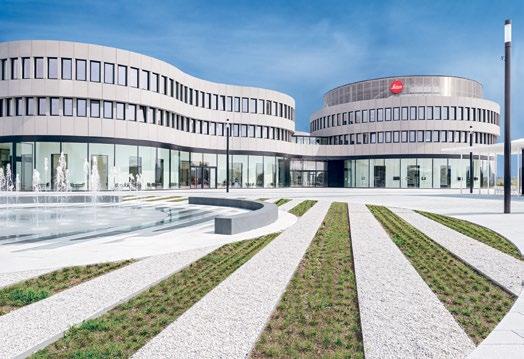


worked. The news about a camera that fitted in practically every pocket, took good pictures and was easy to use spread like wildfire around the world. The original ‘Leica I’ remains the norm for all subsequent systems today. Current digital SLR cameras take still photographs with the same ratio of 3:2 as their analogue ancestor. A prototype was sold at auction two years ago for €14.4 million (including the premium). By far the most expensive camera in the world.
But not everything went smoothly for Leica in Wetzlar. The inventors of digital photography may have copied a lot from Leica, but Leica ran into a problem with digitalisation. To put it bluntly - it had completely missed this development and was a good as bankrupt by 2005. Devices from Asia in particular could do everything much easier and much better. Digital photography turned everyone into a top photographer. Just press the shutter release and the camera does the rest. However, it was just that simplicity that probably saved the company because analogue photographers were always the true artists and wanted to continue proving this with analogue photographs. Leica had inspired people over the decades and its fans remained loyal. Even those who entered the digital age, could continue using the tried-and-tested design. Almost all modern Leicas are visually based on the original body and are immediately recognisable and not just because of the legendary lettering inside the red dot. Moreover, every Leica M-photographer must still know how to take photographs. Subjects have to be focused manually, there’s no electronic viewfinder, no image stabiliser and, in the case of the current M11, the price stands at just under €9,000.
The Leica company is currently doing everything it can to ensure it doesn’t miss any future trends in digitalisation. Its futuristic-looking Leitz Park alone seems to provide sufficient assurance that the Wetzlar-based company truly is futureorientated. There is the hip instant camera for the young club audience. There are the Leica watches, very trendy with a high-quality mechanical movement and minimalist design. There is the ‘Cine 1’, the laser Cinema TV that projects all kinds of video formats in razor-sharp quality, even onto large walls. There is also a Leica mobile phone, which is currently only available in Japan. On the other hand, Leica is successfully supplying camera modules to the Chinese mobile phone manufacturer Xiaomi. Leica, the distinguished camera manufacturer with a glorious past, has arrived in the present. Let the future come.


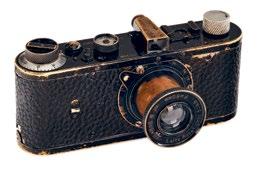
The news about a camera that fitted in practically every pocket, took good pictures and was also easy to use spread like wildfire around the world.



Dordrecht, a suburb of the port city of Rotterdam, is a small and pleasant place. When I arrived at the given address, I found the small watchmaking workshop in the courtyard of a large brick apartment building. The door was opened by Laurens de Rijke, the driving force, mastermind and founder of the boutique watch brand de Rijke. Sporting full motorcycle gear, he arrived at our evening meeting on his off-road Dakar motorcycle, even though it was pouring outside.
“If you’re a real biker, weather doesn’t bother you. Even though it’s mostly rainy and cold these days, I ride my bike all the time,” said Laurens, a lover of classic cars, motorcycles, travel adventures and wristwatches. I actually found him online, in conjunction with one such adventure. A decade ago, Laurens, now a recognised manufacturer of boutique mechanical wristwatches, got on his 50-yearold Vespa and travelled the famous Silk Road through Azerbaijan, Turkmenistan, Uzbekistan, Tajikistan and Kyrgyzstan. During the two-month 11,000-km journey, he bought an old wristwatch at a flea market in Georgia. “I went on the voyage five years after buying my first Vespa. I chose a Vespa, because I’ve been repairing them for a long time.” But something bothered him on that trip. “The watch was covered by my motorcycle glove, and every time I wanted to check the time, I had to pull the glove back. I also had to let go of the handlebars to be able
to adjust my arm.” This gave rise to the idea of making a more practical and useful wristwatch, where the dial and hands could be moved keeping the number 12 always at the top.
Overcoming the obstacles
It was already late in the evening when he was telling me how he learned the mechanical skills that come in handy in mechanical wristwatch manufacture by helping restore old cars and bikes. His favourite brands are Italian – Lancia for cars and Vespa for motorcycles. He started work on the project aged 26. The first year was mainly spent on research; a university professor helped and taught him how to design a watch. He had to manufacture the case and all other parts. The first prototype was finished a year later and promptly thrown away. Laurens started over. It took him three more years to finish the second prototype. “I set myself the goal of making the first watch when I turned 30.





This was six years ago. The biggest challenge for the model now known as the Amalfi, was to make a movable crown and the rotating mechanism/case. It required a lot of designing, prototyping and thinking. It’s easy to use now. Grab the casing with your thumb and forefinger and swivel it as desired. The watches didn’t sell well at first, so I had to find extra work, but I’ve always believed that I would succeed.” When de Rijke started designing and manufacturing wristwatches, he called an established Dutch designer Bruno Ninaber van Eyben, whose studio helped in developing the first ‘driver’s watch’ from the now recognisable Amalfi series. This watch, intended for all passionate drivers, especially lovers of classical shapes, allows the casing to be freely rotated by up to 90 degrees. “It’s a classically designed watch that lovers of both classic vehicles or watches can wear daily, whether they’re on a bike or in a car.”

Lover of all things mechanical I then wondered whether any other family member ever worked on something similar, at least cars or bikes? “Actually no. It probably started by me liking to ride and fix old mopeds as a teenager. I once had eight different ones in one year. Then I bought my first 50 cc Vespa. That was followed by a more powerful model, the aforementioned Silk Road one. I later sold it and used the proceeds to buy the first machine for my watch workshop. I needed start-up capital. And now times have changed,” he smiled. “I’m glad I was able to buy that Vespa back a few months ago. Together with a friend, we also have a beautiful vintage Lancia, which we use for vacations in Italy.” Mechanical watches and older cars have a lot in common.









Everything is mechanical. No electronics. The movement hasn’t changed much in history. However, innovations and changes are a constant in Laurens’s thinking. “We joined forces with a well-known automotive illustrator to design the latest series of watches.” Guy Allen, who works with brands like Porsche, drew the dial plates for the series, with the motives of earth, water and air. The series will consist of 75 pieces – 3 times 25 watches. “The first one will come with the silhouette of the Lancia Aurelia, the second with the design lines of the Riva yacht and the third with the stylised image of a Macchi plane landing on water.”
Quality over quantity
De Rijke watches come in small numbers. Each piece is fully crafted and assembled by hand. Last year 300 were produced and the plan is for something similar this year. “Probably between 200 and 300. The average waiting time is around three months. I don’t want to make them in large numbers, I’m more interested in development, exclusivity and manufacturing quality. That’s how value is maintained.” He is currently working on a watch with a snowwhite casing made entirely of ceramic. “If all
goes well, it will come to the market in three years. Even if we fail, it won’t be the end of the world. But I’m happy when I see us succeed. I sometimes come across a used Amalfi from the first series, being sold online for three times its original price.”
Never too late for an espresso “Our day in the workshop starts with good coffee,” added Laurens, who is occasionally helped by a knowledgeable engineer friend whom he holds in high regard. “Before starting work, we have a nice cup of good coffee. It’s a must. Would you like an espresso?” It was already late as I was saying goodbye, but it’s never too late for good coffee. Laurens turned on the bulky and immaculately polished metal espresso machine. “It’s from the sixties. It was broken, but I managed to repair and restore it. I later found a similar machine which I use for spare parts. It makes great coffee,” he explained to me as he was grinding, weighing and pressing the coffee in a handle before serving a short, creamy and fragrant espresso, one of the best I’ve tasted recently. “Great coffee,” I complimented, with Laurens agreeing, “Yes. It’s really good.”
Laurens de Rijke obviously also knows his way around coffee, and if he wasn’t working on wristwatches for drivers, he could have easily opened a coffee shop serving top-quality espresso. Or fix old Vespas and Lancias.


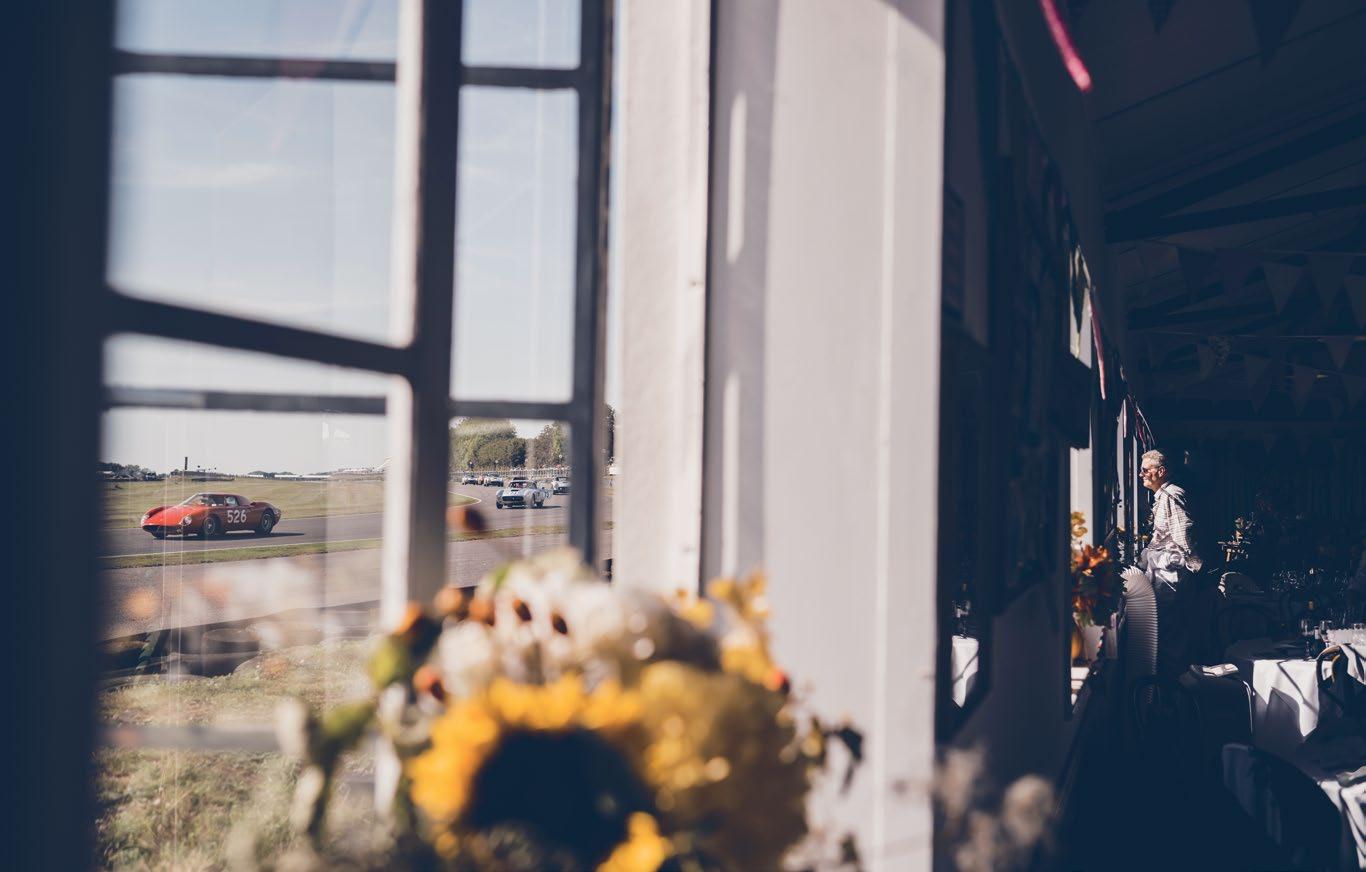
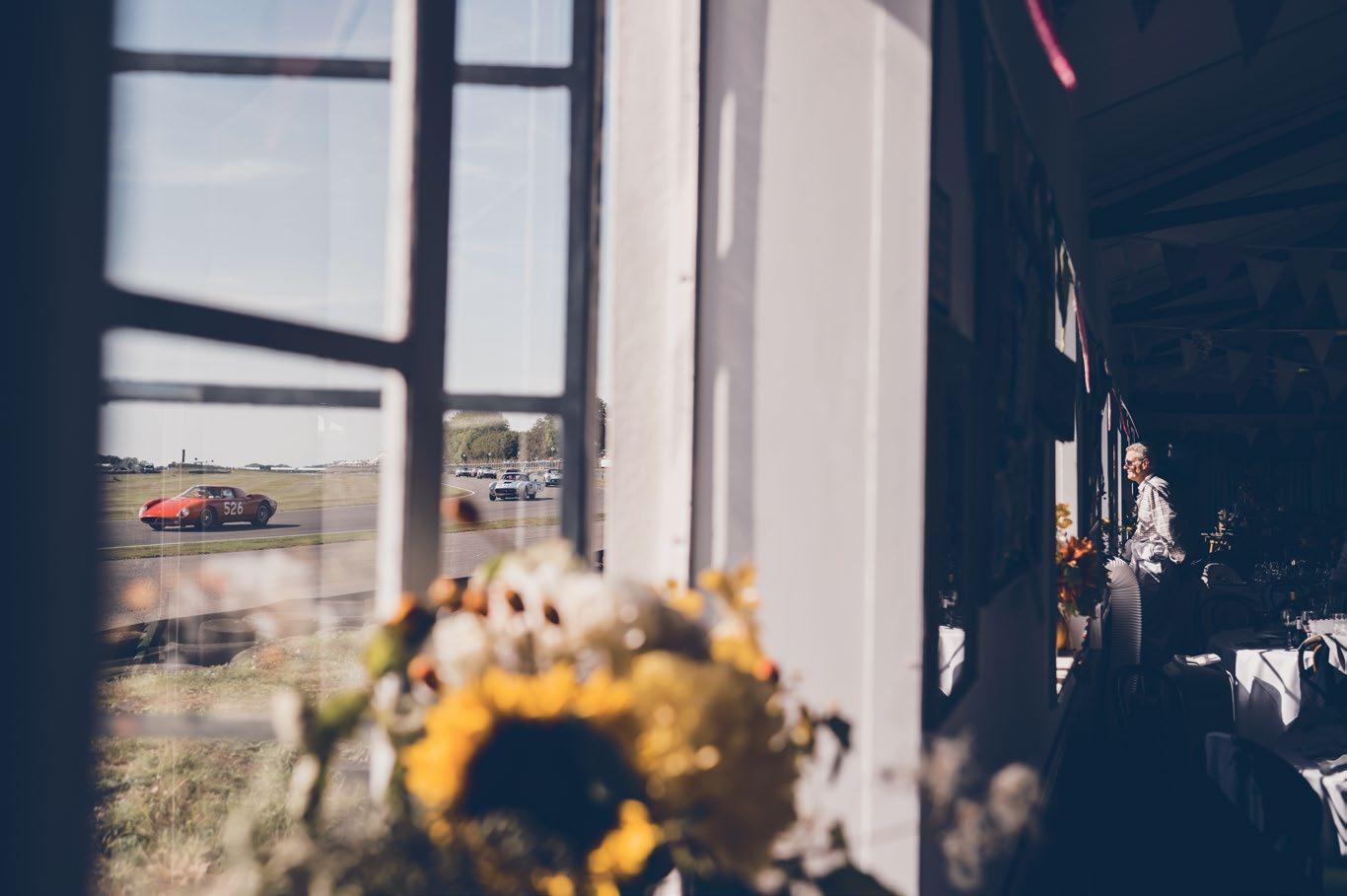


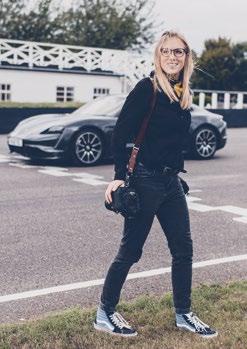
Amy Heynes (née Shore) admits right at the start that she ended up in car photography quite by chance, thanks to some photos she took of a Ferrari P4 being restored at a company her father worked for. Not wanting to let them sit in a drawer, she sent them to an English car magazine in case they were interested. They turned out to be more than just interested and offered to work with her. The rest is history.
by Bor Dobrinphotography Amy Shore Photography






The history of each car and motorcycle is obviously interesting, but it’s almost always connected with the story of its owners and it’s at the cross section of the two that Amy excels.
Coincidences may exist, but they are based on an enormous amount of work, experimentation and observation of the world around us. The 32-year-old Amy has, even if she didn’t know it, always been connected with cars, mainly through her father, who worked in car restoration workshops after being a Formula 1 mechanic. He was also an amateur photographer, earning some money on the side by taking wedding photos. After studying metalsmithing and silversmithing, Amy also took up wedding photography before ending up taking snapshots of cars and motorcycles. She liked her studies very much, but had not picked up a soldering torch after leaving the university.
Unique story teller
There’s certainly no lack of fi re burning inside of her. It’s impossible not to notice her energy, openness and curiosity, an extraordinary ‘joie de vivre’ which perfectly matches her preferred fi eld of classic car and motorcycle photography. Her subjects, almost without exception, come with their own stories, some starting nearer, others further back in time. The history of each car and motorcycle is obviously interesting, but it’s almost always connected with the story of its owners and it’s at the cross section of the two that Amy excels. With her extraordinary feel for capturing the moment, details, composition and light, Amy combines both stories into one. Some of her photos seem completely dreamlike and can easily take you on a trip through the history of motoring towards a more romantic era. And this era, so it seems, is also her favourite one. It’s best embodied by the Goodwood Revival festival, which is by far the closest to her – both as an event and subject matter. Her photos of this annual meet signifi cantly influenced the development of her career. A lot of people think that Amy was a big petrolhead from the beginning, but that’s not the case. What was only basic knowledge when she took up car photography, is now much deeper, also due to marrying William Heynes, with whom she opened a workshop for the restoration of classic Jaguars.
Honesty is the best policy
Amy Shore, which remains her professional name, adds that photography is a “dog-eat-dog world”, but unlike most photographers who jealously hide their trade secrets, she remains open and honest. Her website openly delves into the many details of the genre, from equipment, tips on picture taking, and business advice on how to start and succeed. She says she wrote the blog because the photography-related questions she got asked through social networks were simply too much for her to answer individually. At the same time, it is precisely this frankness and quality of the blog’s photos that brought her the prestigious ambassadorship for Nikon and new clients – from important automotive magazines to big and esteemed automotive brands.
She embellishes her photos with her characteristic editing method, which is soft, romantic, with hazy blacks – a style that fits perfectly with the subject matter.
Minimal intervention
Amy prefers to create most of her photography in the camera rather than in post-production. Even there she doesn’t deviate from her honesty. She doesn’t change the light in editing, only removes minor disturbing elements. She embellishes her photos with her characteristic processing method, which is soft, romantic, with hazy blacks – a style that fi ts perfectly with the subject matter. A critical argument that could be made is that her photos would look quite ordinary without her signature editing, but she counters it by making an analogy with music, likening the photo to the rhythm of the drums, and her work in post to the melody overlaid on it to evoke emotions. This is exactly what Amy wants to do; move in the direction of being romantic, which in her opinion would not work for today’s supercars with their sharp lines and bleeding-edge technology. In most cases, clients hire her because of her uniqueness. On the other hand, this means fewer commercial photoshoots and a bit less money. However, she’s happy because she can create what she feels and wants. Amy believes that a photo should express a photographer’s personality and values. As with most artists, we can feel that part of her confi dence also stems from being successful. She is not afraid of artifi cial intelligence, though she does acknowledge it will change photography. However, except as a technical aid, she sees no other use for it in her fi eld.
Relevant and inspirational
Personal projects are extremely important for a photographer, and Amy is no exception. One such project was documenting her journey with a MINI Mayfair around Scotland. The response was overwhelming and her photos proved inspirational for many – and this at a time when images are mainly viewed on social networks. Amy is convinced that her photos have the greatest impact if printed on classic photographic paper, as this allows us to feel the photo to a greater degree because it’s much more inspiring. Which is the point. In the case of Amy’s photographs, of course, not by coincidence.

Amy likens the photo to the rhythm of the drums, and her work in post to the melody overlaid on it to evoke emotions.
Amy Heynes je pri fotografiranju avtomobilov pristala bolj kot ne po naključju, zgolj po zaslugi nekaj fotografij Ferrarija P4, ki jih je posnela za restavratorsko podjetje, v katerem je delal njen oče. Poslala jih je angleški avtomobilski reviji, ali bi jih morda zanimale … Ponudili so ji sodelovanje, preostalo pa je – kot radi rečemo – zgodovina.
Danes 32-letna Amy je po študiju oblikovanja kovin poročno fotografiranje zamenjala za avtomobilsko in motoristično fotografijo. Med pogovorom je mogoče hitro opaziti njeno energijo, odprtost, radovednost in izjemno radost do življenja, ki so se odlično ujele s fotografijo avtomobilov in motociklov. Zgodovina avtomobilov in motociklov je zanimiva, a je skoraj vedno povezana z zgodbami njihovih lastnikov. In pri tem Amy Shore, kot je njeno umetniško ime, s svojimi fotografijami blesti. Z izjemnim občutkom za primeren trenutek, celoto, detajl, kompozicijo in svetlobo združi obe zgodbi v celoto. Za fotografa so izjemno pomembni osebni projekti. Eden od teh je bil dokumentiranje poti s starim minijem po Škotski. Odziv je bil izjemno velik, njene fotografije so navdihnile veliko ljudi. Amy je prepričana, da njene fotografije še vedno dosežejo največji učinek, če so natisnjene na klasičen fotografski papir. Tako fotografijo bolje začutimo, ker nas veliko bolj navdihne. In to je bistvo. Pri fotografijah Amy Heynes seveda to nikakor ni naključje.






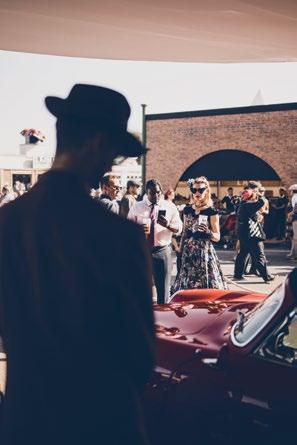
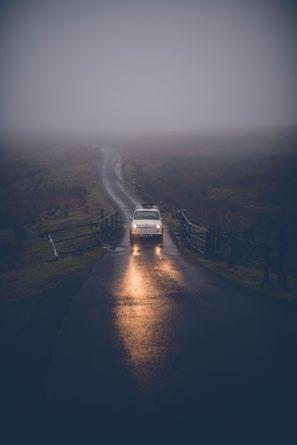
Mankind’s journey from its cradle in Africa, Marco Polo’s travels to China on the Silk Road, Christopher Columbus’s voyages to the Americas…
All great odysseys. And now MotoGP’s longest-ever season: from the Middle East to Europe, to the USA and back to Europe, from Europe to Central Asia, back to Europe, then to the Far East and Australia, then finally back to Europe. More than three thousand paddock staff, plus several thousand tonnes of freight carried in jumbo jets, join this globetrotting tour, which will be completed in less than nine months.
There’s never been a MotoGP championship like it and – no doubt about it – the 2024 campaign will take riders, mechanics and other team staff to the brink. Twenty-one rounds require everyone in the paddock – not just the riders – to be mentally and physically stronger than ever. Many mechanics will be on the road for at least thirty weeks this year.
And it’s not only that. The premier MotoGP class is now more demanding than ever, for riders and crews. The weekends are more intense, because the racing is much closer, the motorcycles are more complicated and the new format includes a Saturday sprint race, which has riders doing pre-qualifying timeattacks on Friday afternoons.
No wonder the number of riders missing Sunday races through injury increased by almost 300 % last year, when the sprint-race format was introduced. The crunch point of the
season will be the final seven races, when the MotoGP title fight will reach boiling point. The pressure will increase for everyone, which will be intensified by this mind-boggling nine-week schedule: India, Indonesia, Japan, Australia, Thailand, Malaysia and Valencia in Spain!
The searing demands of MotoGP’s end-ofseason climax are also changing paddock life, with team members looking after each other, because the mental and emotional stresses are so high.
“We have to protect each other much more than we used to,” says Pedro Acosta’s Red Bull GASGAS Tech3 crew chief Paul Trevathan, who has worked in MotoGP for two decades. “We may have somebody who’s got problems at home. Maybe his wife is sick, or the car’s broken down and they can’t afford to fix it, and he’s overseas for three weeks… You see someone dropping a bit, so you take him aside, ‘Is everything okay buddy?’
“We spend more than half the year with these people, more than with our families, so we have to be much more openminded and check in on people. Hey, this guy hasn’t spoken a word today, why’s that?
“This is much, much more important than before, though I’ve always thought that the atmosphere inside the box is something the rider thrives off. If the rider comes in and sees a happy box, with everything under control, the calmness that brings him is enormous.
“The whole team is under pressure, but what
about the rider?! I remember Johann Zarco coming to KTM and talking about the need to go straight to Q2…” [If a rider’s best lap in Friday afternoon’s pre-qualifying session doesn’t take him directly into the Q2 qualifying session, he must take part in Q1 and risk everything to finish that session in the top two, which promotes him to Q2, guaranteeing a better starting position.]
“We were like, ‘Okay, Johann, we understand’. And he said, ‘No you don’t understand. This is a must, because it saves me two extra lives every weekend. Every time I risk it’s like risking a life and if I have to take that risk two fewer times a weekend [with two on-the-limit laps in Q1], it’s massive for me’. Then you think, wow, I didn’t think about it like that, but this is the reality…”
The cost of this reality will be riders retiring earlier than they used to. “For sure, MotoGP careers will be shorter compared to a few years ago, because it’s so mentally demanding,” says reigning MotoGP king Pecco Bagnaia.
Mat Oxley
Mat Oxley has been a motorcycle journalist for more than four decades, covering MotoGP full-time since 1988. During his own racing career, he won an Isle of Man TT race and took third place in the Endurance World Championship, scoring second-place finishes in the Le Mans and Spa-Francorchamps 24-hour races. He is based in London, UK.
by Mat OxleyJoin
R 1300 GS Slip-On Line (Titanium) With EC/ECE type approval


With
than three
of your drive. Utilising
experience,
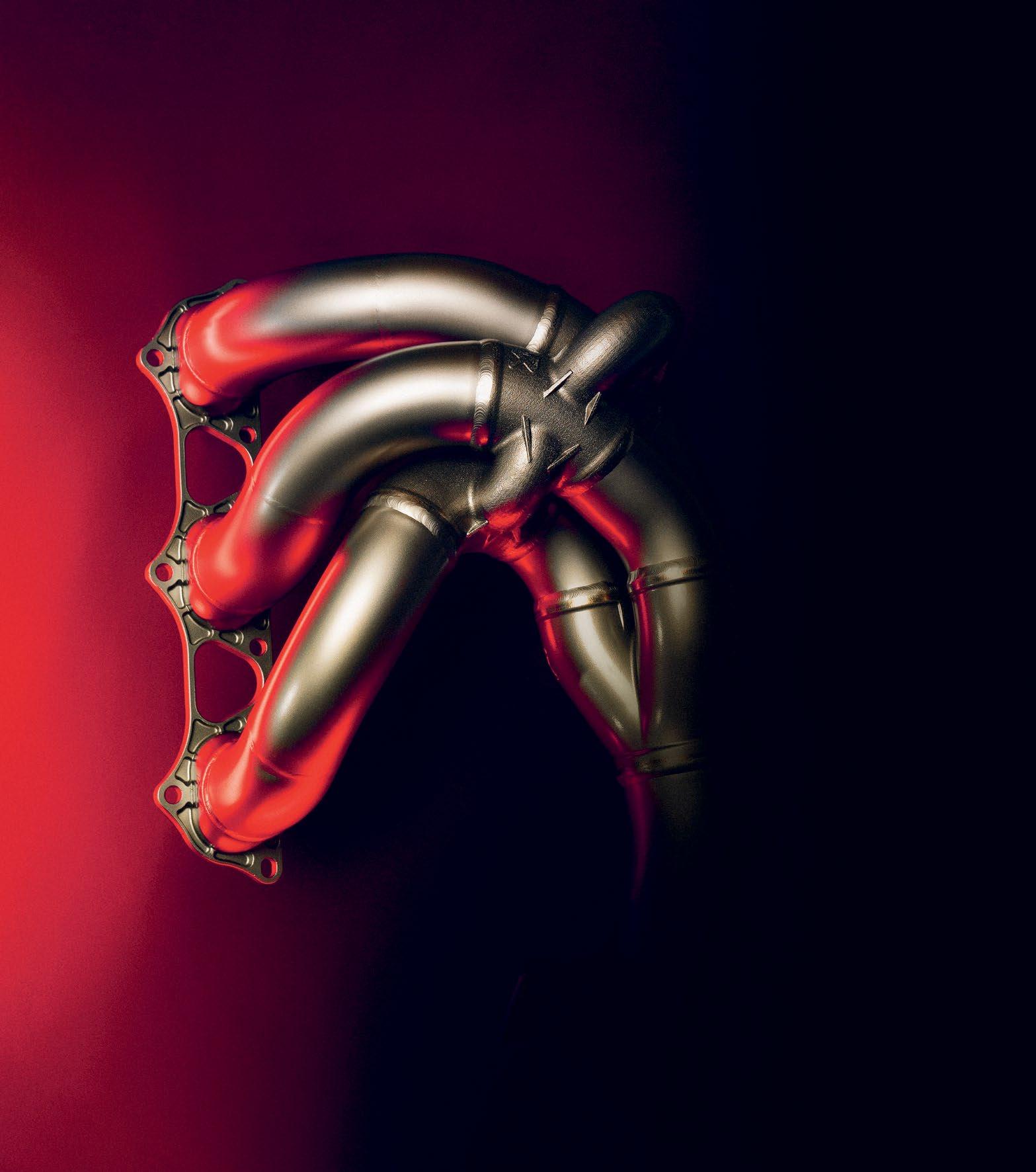
of